Quick filters:
Bunyaviridae Stock Photos and Images
 Oropouche virus that causes Oropouche fever, vector infection from sloth to human by mosquito byte, an emergent disease from the Americas 3d renderin Stock Photohttps://www.alamy.com/image-license-details/?v=1https://www.alamy.com/oropouche-virus-that-causes-oropouche-fever-vector-infection-from-sloth-to-human-by-mosquito-byte-an-emergent-disease-from-the-americas-3d-renderin-image626634042.html
Oropouche virus that causes Oropouche fever, vector infection from sloth to human by mosquito byte, an emergent disease from the Americas 3d renderin Stock Photohttps://www.alamy.com/image-license-details/?v=1https://www.alamy.com/oropouche-virus-that-causes-oropouche-fever-vector-infection-from-sloth-to-human-by-mosquito-byte-an-emergent-disease-from-the-americas-3d-renderin-image626634042.htmlRF2YBDJ36–Oropouche virus that causes Oropouche fever, vector infection from sloth to human by mosquito byte, an emergent disease from the Americas 3d renderin
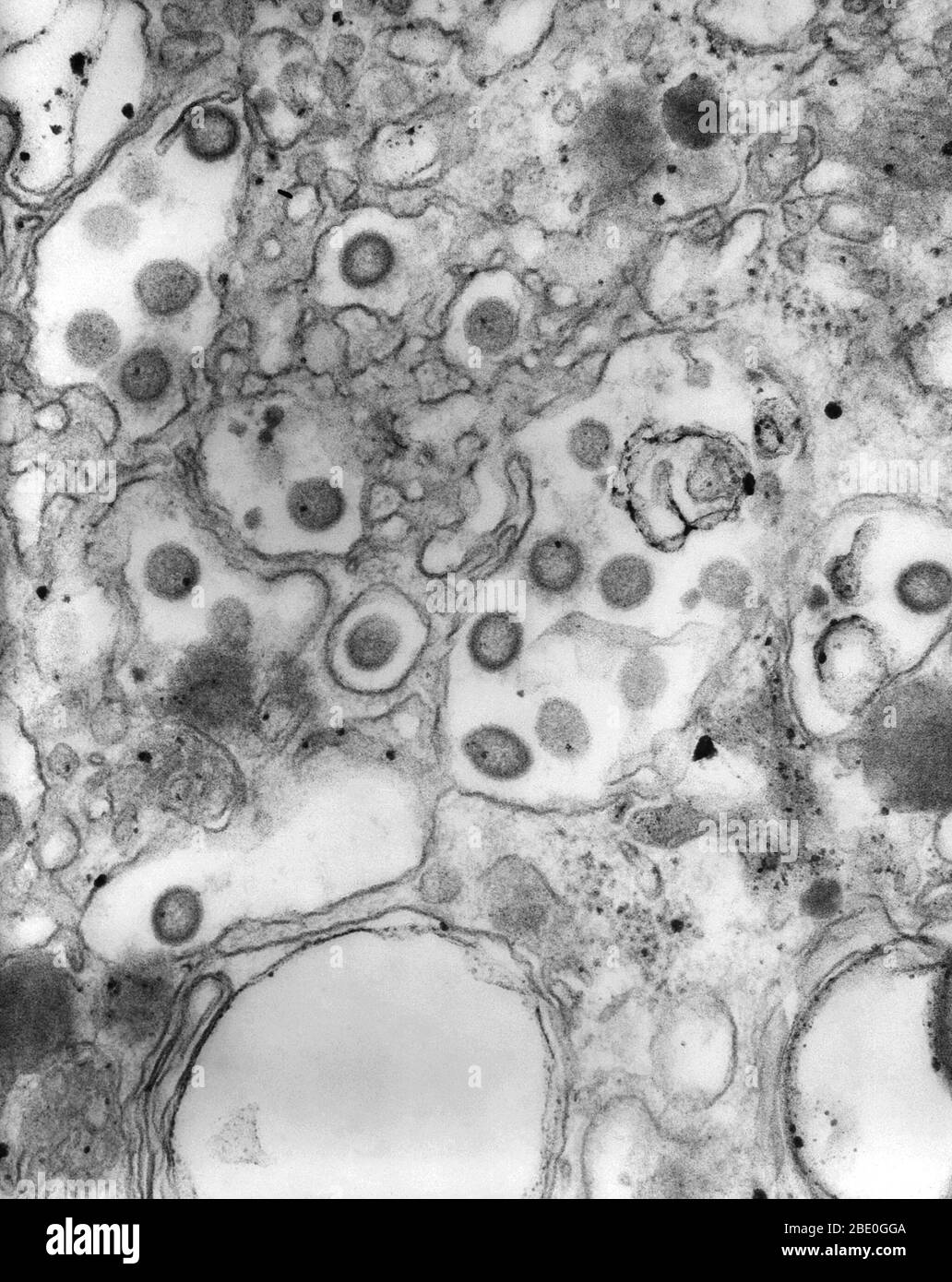 Negatively-stained transmission electron micrograph (TEM) of numerous Ganjam virus virions in tissue specimen. This Bunyaviridae family member is antigenically, closely related to, and an Asian variant of, the Nairobi sheep disease virus (NSDV). Though not contagious, Ganjam virus is an arbovirus, spread through the bite of certain ticks, including Hemaphysalis intermedia and Rhipecephalus hemaphysaloides. The largest family of viruses, Bunyaviridae are negative-sense single-stranded RNA viruses ((-) ssRNA), which are spread through contact with infected arthropods and rodents. Stock Photohttps://www.alamy.com/image-license-details/?v=1https://www.alamy.com/negatively-stained-transmission-electron-micrograph-tem-of-numerous-ganjam-virus-virions-in-tissue-specimen-this-bunyaviridae-family-member-is-antigenically-closely-related-to-and-an-asian-variant-of-the-nairobi-sheep-disease-virus-nsdv-though-not-contagious-ganjam-virus-is-an-arbovirus-spread-through-the-bite-of-certain-ticks-including-hemaphysalis-intermedia-and-rhipecephalus-hemaphysaloides-the-largest-family-of-viruses-bunyaviridae-are-negative-sense-single-stranded-rna-viruses-ssrna-which-are-spread-through-contact-with-infected-arthropods-and-rodents-image352825546.html
Negatively-stained transmission electron micrograph (TEM) of numerous Ganjam virus virions in tissue specimen. This Bunyaviridae family member is antigenically, closely related to, and an Asian variant of, the Nairobi sheep disease virus (NSDV). Though not contagious, Ganjam virus is an arbovirus, spread through the bite of certain ticks, including Hemaphysalis intermedia and Rhipecephalus hemaphysaloides. The largest family of viruses, Bunyaviridae are negative-sense single-stranded RNA viruses ((-) ssRNA), which are spread through contact with infected arthropods and rodents. Stock Photohttps://www.alamy.com/image-license-details/?v=1https://www.alamy.com/negatively-stained-transmission-electron-micrograph-tem-of-numerous-ganjam-virus-virions-in-tissue-specimen-this-bunyaviridae-family-member-is-antigenically-closely-related-to-and-an-asian-variant-of-the-nairobi-sheep-disease-virus-nsdv-though-not-contagious-ganjam-virus-is-an-arbovirus-spread-through-the-bite-of-certain-ticks-including-hemaphysalis-intermedia-and-rhipecephalus-hemaphysaloides-the-largest-family-of-viruses-bunyaviridae-are-negative-sense-single-stranded-rna-viruses-ssrna-which-are-spread-through-contact-with-infected-arthropods-and-rodents-image352825546.htmlRM2BE0GGA–Negatively-stained transmission electron micrograph (TEM) of numerous Ganjam virus virions in tissue specimen. This Bunyaviridae family member is antigenically, closely related to, and an Asian variant of, the Nairobi sheep disease virus (NSDV). Though not contagious, Ganjam virus is an arbovirus, spread through the bite of certain ticks, including Hemaphysalis intermedia and Rhipecephalus hemaphysaloides. The largest family of viruses, Bunyaviridae are negative-sense single-stranded RNA viruses ((-) ssRNA), which are spread through contact with infected arthropods and rodents.
 BUNYAVIRUS, TEM Stock Photohttps://www.alamy.com/image-license-details/?v=1https://www.alamy.com/stock-photo-bunyavirus-tem-57816493.html
BUNYAVIRUS, TEM Stock Photohttps://www.alamy.com/image-license-details/?v=1https://www.alamy.com/stock-photo-bunyavirus-tem-57816493.htmlRMDA1NEN–BUNYAVIRUS, TEM
 Negative-stained Transmission Electron Micrograph (TEM) depicts Sin Nombre virus (SNV) virions, which are members of the genus Hantavirus, within the family Bunyaviridae. The Sin Nombre virus is the cause of hantavirus cardiopulmonary syndrome (HCPS), also referred to as hantavirus pulmonary syndrome (HPS), in humans. In November 1993, the specific hantavirus that caused the Four Corners outbreak was isolated. Using tissue from a deer mouse that had been trapped near the New Mexico home of a person who had gotten the disease, the Special Pathogens Branch at CDC grew the virus in the laboratory Stock Photohttps://www.alamy.com/image-license-details/?v=1https://www.alamy.com/negative-stained-transmission-electron-micrograph-tem-depicts-sin-nombre-virus-snv-virions-which-are-members-of-the-genus-hantavirus-within-the-family-bunyaviridae-the-sin-nombre-virus-is-the-cause-of-hantavirus-cardiopulmonary-syndrome-hcps-also-referred-to-as-hantavirus-pulmonary-syndrome-hps-in-humans-in-november-1993-the-specific-hantavirus-that-caused-the-four-corners-outbreak-was-isolated-using-tissue-from-a-deer-mouse-that-had-been-trapped-near-the-new-mexico-home-of-a-person-who-had-gotten-the-disease-the-special-pathogens-branch-at-cdc-grew-the-virus-in-the-laboratory-image352826932.html
Negative-stained Transmission Electron Micrograph (TEM) depicts Sin Nombre virus (SNV) virions, which are members of the genus Hantavirus, within the family Bunyaviridae. The Sin Nombre virus is the cause of hantavirus cardiopulmonary syndrome (HCPS), also referred to as hantavirus pulmonary syndrome (HPS), in humans. In November 1993, the specific hantavirus that caused the Four Corners outbreak was isolated. Using tissue from a deer mouse that had been trapped near the New Mexico home of a person who had gotten the disease, the Special Pathogens Branch at CDC grew the virus in the laboratory Stock Photohttps://www.alamy.com/image-license-details/?v=1https://www.alamy.com/negative-stained-transmission-electron-micrograph-tem-depicts-sin-nombre-virus-snv-virions-which-are-members-of-the-genus-hantavirus-within-the-family-bunyaviridae-the-sin-nombre-virus-is-the-cause-of-hantavirus-cardiopulmonary-syndrome-hcps-also-referred-to-as-hantavirus-pulmonary-syndrome-hps-in-humans-in-november-1993-the-specific-hantavirus-that-caused-the-four-corners-outbreak-was-isolated-using-tissue-from-a-deer-mouse-that-had-been-trapped-near-the-new-mexico-home-of-a-person-who-had-gotten-the-disease-the-special-pathogens-branch-at-cdc-grew-the-virus-in-the-laboratory-image352826932.htmlRM2BE0J9T–Negative-stained Transmission Electron Micrograph (TEM) depicts Sin Nombre virus (SNV) virions, which are members of the genus Hantavirus, within the family Bunyaviridae. The Sin Nombre virus is the cause of hantavirus cardiopulmonary syndrome (HCPS), also referred to as hantavirus pulmonary syndrome (HPS), in humans. In November 1993, the specific hantavirus that caused the Four Corners outbreak was isolated. Using tissue from a deer mouse that had been trapped near the New Mexico home of a person who had gotten the disease, the Special Pathogens Branch at CDC grew the virus in the laboratory
 Rift Valley fever virus particles, computer illustration. This virus particle consists of an RNA (ribonucleic acid) genome enclosed in a protein capsid, which is itself surrounded by a glycoprotein envelope. Rift Valley fever occurs in Africa, infecting humans, cattle, sheep, rodents and other species. It is transmitted by insects, mainly mosquitoes, and causes chills, fever, a headache and joint and muscle pain. It is rarely fatal, but can cause retinal haemorrhages that may lead to visual impairment. Stock Photohttps://www.alamy.com/image-license-details/?v=1https://www.alamy.com/rift-valley-fever-virus-particles-computer-illustration-this-virus-particle-consists-of-an-rna-ribonucleic-acid-genome-enclosed-in-a-protein-capsid-which-is-itself-surrounded-by-a-glycoprotein-envelope-rift-valley-fever-occurs-in-africa-infecting-humans-cattle-sheep-rodents-and-other-species-it-is-transmitted-by-insects-mainly-mosquitoes-and-causes-chills-fever-a-headache-and-joint-and-muscle-pain-it-is-rarely-fatal-but-can-cause-retinal-haemorrhages-that-may-lead-to-visual-impairment-image364228140.html
Rift Valley fever virus particles, computer illustration. This virus particle consists of an RNA (ribonucleic acid) genome enclosed in a protein capsid, which is itself surrounded by a glycoprotein envelope. Rift Valley fever occurs in Africa, infecting humans, cattle, sheep, rodents and other species. It is transmitted by insects, mainly mosquitoes, and causes chills, fever, a headache and joint and muscle pain. It is rarely fatal, but can cause retinal haemorrhages that may lead to visual impairment. Stock Photohttps://www.alamy.com/image-license-details/?v=1https://www.alamy.com/rift-valley-fever-virus-particles-computer-illustration-this-virus-particle-consists-of-an-rna-ribonucleic-acid-genome-enclosed-in-a-protein-capsid-which-is-itself-surrounded-by-a-glycoprotein-envelope-rift-valley-fever-occurs-in-africa-infecting-humans-cattle-sheep-rodents-and-other-species-it-is-transmitted-by-insects-mainly-mosquitoes-and-causes-chills-fever-a-headache-and-joint-and-muscle-pain-it-is-rarely-fatal-but-can-cause-retinal-haemorrhages-that-may-lead-to-visual-impairment-image364228140.htmlRF2C4G0KT–Rift Valley fever virus particles, computer illustration. This virus particle consists of an RNA (ribonucleic acid) genome enclosed in a protein capsid, which is itself surrounded by a glycoprotein envelope. Rift Valley fever occurs in Africa, infecting humans, cattle, sheep, rodents and other species. It is transmitted by insects, mainly mosquitoes, and causes chills, fever, a headache and joint and muscle pain. It is rarely fatal, but can cause retinal haemorrhages that may lead to visual impairment.
 Oropouche virus that causes Oropouche fever, an emergent disease from the Americas 3d rendering Stock Photohttps://www.alamy.com/image-license-details/?v=1https://www.alamy.com/oropouche-virus-that-causes-oropouche-fever-an-emergent-disease-from-the-americas-3d-rendering-image616353469.html
Oropouche virus that causes Oropouche fever, an emergent disease from the Americas 3d rendering Stock Photohttps://www.alamy.com/image-license-details/?v=1https://www.alamy.com/oropouche-virus-that-causes-oropouche-fever-an-emergent-disease-from-the-americas-3d-rendering-image616353469.htmlRF2XPN93W–Oropouche virus that causes Oropouche fever, an emergent disease from the Americas 3d rendering
 Negatively-stained transmission electron micrograph (TEM) of numerous Ganjam virus virions in a tissue specimen Stock Photohttps://www.alamy.com/image-license-details/?v=1https://www.alamy.com/stock-photo-negatively-stained-transmission-electron-micrograph-tem-of-numerous-30203183.html
Negatively-stained transmission electron micrograph (TEM) of numerous Ganjam virus virions in a tissue specimen Stock Photohttps://www.alamy.com/image-license-details/?v=1https://www.alamy.com/stock-photo-negatively-stained-transmission-electron-micrograph-tem-of-numerous-30203183.htmlRMBN3TD3–Negatively-stained transmission electron micrograph (TEM) of numerous Ganjam virus virions in a tissue specimen
 Oropouche virus that causes Oropouche fever, an emergent disease from the Americas Stock Photohttps://www.alamy.com/image-license-details/?v=1https://www.alamy.com/oropouche-virus-that-causes-oropouche-fever-an-emergent-disease-from-the-americas-image617000295.html
Oropouche virus that causes Oropouche fever, an emergent disease from the Americas Stock Photohttps://www.alamy.com/image-license-details/?v=1https://www.alamy.com/oropouche-virus-that-causes-oropouche-fever-an-emergent-disease-from-the-americas-image617000295.htmlRF2XRPP4R–Oropouche virus that causes Oropouche fever, an emergent disease from the Americas
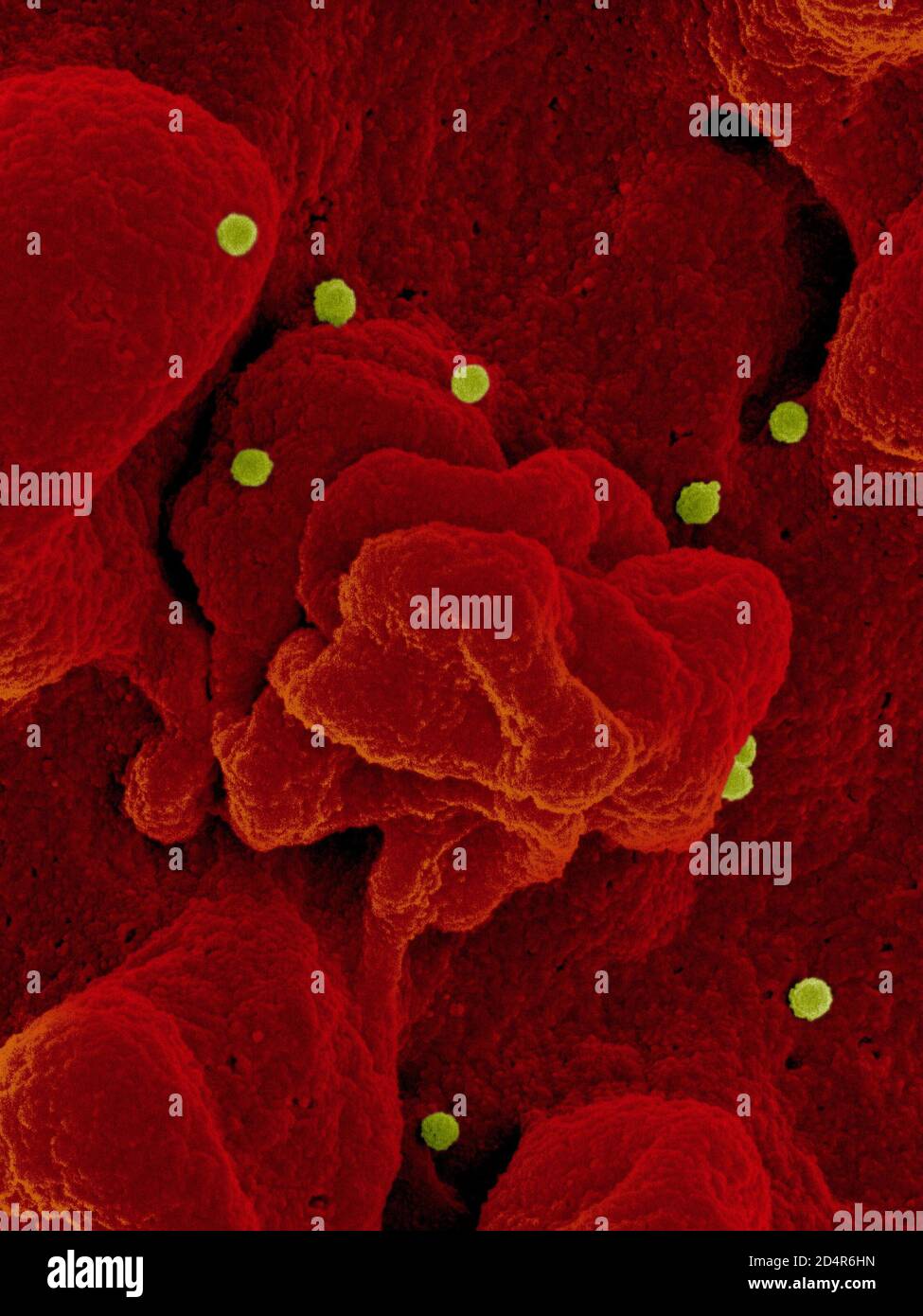 Coloured transmission electron micrograph (TEM) of Crimean- Congo haemorrhagic fever (CCHF) viruses (brown). CCHF is transmitted to humans when they a Stock Photohttps://www.alamy.com/image-license-details/?v=1https://www.alamy.com/coloured-transmission-electron-micrograph-tem-of-crimean-congo-haemorrhagic-fever-cchf-viruses-brown-cchf-is-transmitted-to-humans-when-they-a-image381596817.html
Coloured transmission electron micrograph (TEM) of Crimean- Congo haemorrhagic fever (CCHF) viruses (brown). CCHF is transmitted to humans when they a Stock Photohttps://www.alamy.com/image-license-details/?v=1https://www.alamy.com/coloured-transmission-electron-micrograph-tem-of-crimean-congo-haemorrhagic-fever-cchf-viruses-brown-cchf-is-transmitted-to-humans-when-they-a-image381596817.htmlRM2D4R6HN–Coloured transmission electron micrograph (TEM) of Crimean- Congo haemorrhagic fever (CCHF) viruses (brown). CCHF is transmitted to humans when they a
 TEM of La Crosse encephalitis virus Stock Photohttps://www.alamy.com/image-license-details/?v=1https://www.alamy.com/tem-of-la-crosse-encephalitis-virus-image65497638.html
TEM of La Crosse encephalitis virus Stock Photohttps://www.alamy.com/image-license-details/?v=1https://www.alamy.com/tem-of-la-crosse-encephalitis-virus-image65497638.htmlRFDPFJWA–TEM of La Crosse encephalitis virus
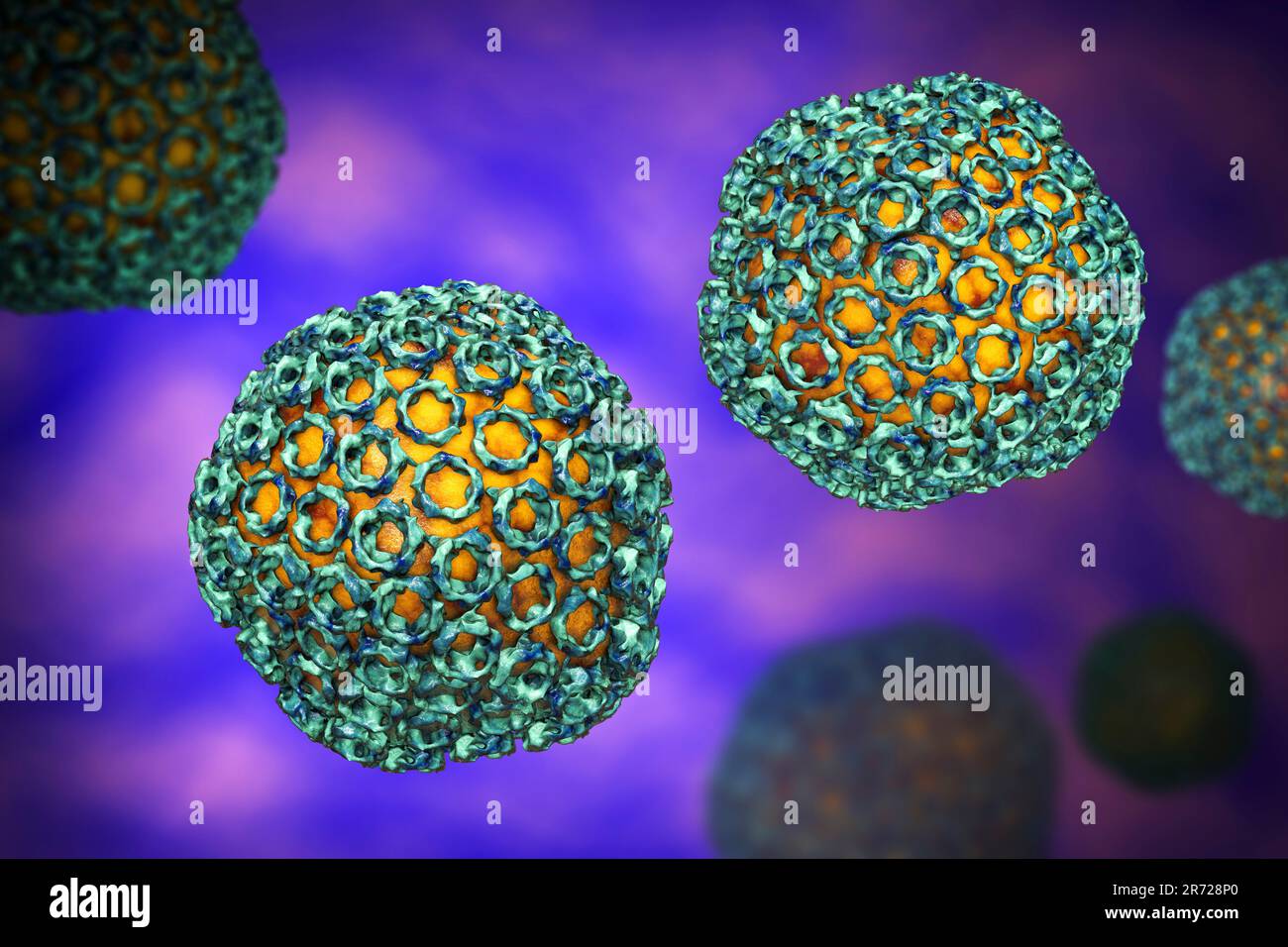 Rift Valley fever virus particles, computer illustration. This virus particle consists of an RNA (ribonucleic acid) genome enclosed in a protein capsi Stock Photohttps://www.alamy.com/image-license-details/?v=1https://www.alamy.com/rift-valley-fever-virus-particles-computer-illustration-this-virus-particle-consists-of-an-rna-ribonucleic-acid-genome-enclosed-in-a-protein-capsi-image555085160.html
Rift Valley fever virus particles, computer illustration. This virus particle consists of an RNA (ribonucleic acid) genome enclosed in a protein capsi Stock Photohttps://www.alamy.com/image-license-details/?v=1https://www.alamy.com/rift-valley-fever-virus-particles-computer-illustration-this-virus-particle-consists-of-an-rna-ribonucleic-acid-genome-enclosed-in-a-protein-capsi-image555085160.htmlRF2R728P0–Rift Valley fever virus particles, computer illustration. This virus particle consists of an RNA (ribonucleic acid) genome enclosed in a protein capsi
 This negatively-stained transmission electron micrograph (TEM) revealed presence La Crosse (LAC) encephalitis virus Stock Photohttps://www.alamy.com/image-license-details/?v=1https://www.alamy.com/stock-photo-this-negatively-stained-transmission-electron-micrograph-tem-revealed-52111571.html
This negatively-stained transmission electron micrograph (TEM) revealed presence La Crosse (LAC) encephalitis virus Stock Photohttps://www.alamy.com/image-license-details/?v=1https://www.alamy.com/stock-photo-this-negatively-stained-transmission-electron-micrograph-tem-revealed-52111571.htmlRMD0NTRF–This negatively-stained transmission electron micrograph (TEM) revealed presence La Crosse (LAC) encephalitis virus
 BUNYAVIRUS, TEM Stock Photohttps://www.alamy.com/image-license-details/?v=1https://www.alamy.com/stock-photo-bunyavirus-tem-57816501.html
BUNYAVIRUS, TEM Stock Photohttps://www.alamy.com/image-license-details/?v=1https://www.alamy.com/stock-photo-bunyavirus-tem-57816501.htmlRMDA1NF1–BUNYAVIRUS, TEM
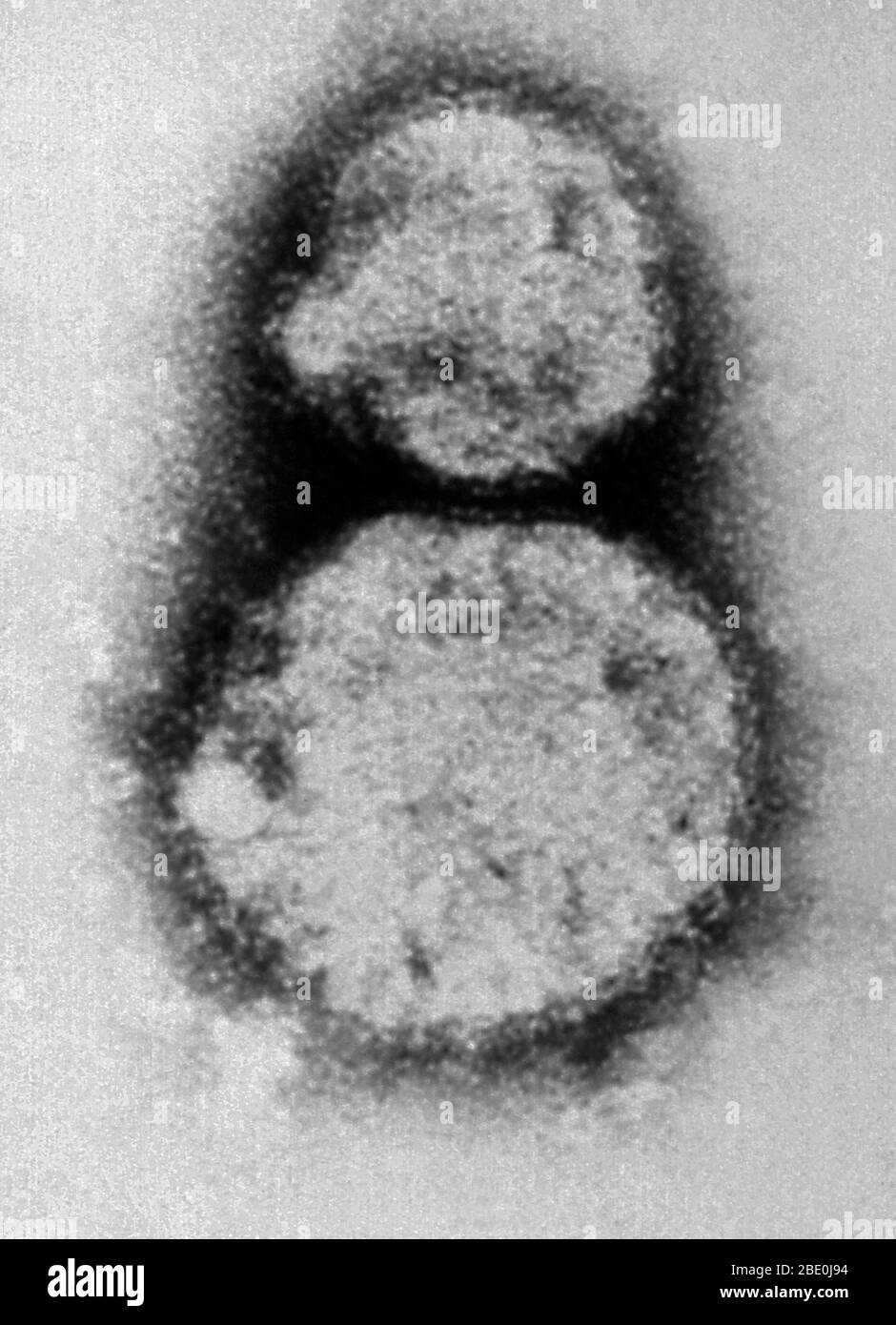 Negative-stained Transmission Electron Micrograph (TEM) depicts Sin Nombre virus (SNV) virions, which are members of the genus Hantavirus, within the family Bunyaviridae. The Sin Nombre virus is the cause of hantavirus cardiopulmonary syndrome (HCPS), also referred to as hantavirus pulmonary syndrome (HPS), in humans. In November 1993, the specific hantavirus that caused the Four Corners outbreak was isolated. Using tissue from a deer mouse that had been trapped near the New Mexico home of a person who had gotten the disease, the Special Pathogens Branch at CDC grew the virus in the laboratory Stock Photohttps://www.alamy.com/image-license-details/?v=1https://www.alamy.com/negative-stained-transmission-electron-micrograph-tem-depicts-sin-nombre-virus-snv-virions-which-are-members-of-the-genus-hantavirus-within-the-family-bunyaviridae-the-sin-nombre-virus-is-the-cause-of-hantavirus-cardiopulmonary-syndrome-hcps-also-referred-to-as-hantavirus-pulmonary-syndrome-hps-in-humans-in-november-1993-the-specific-hantavirus-that-caused-the-four-corners-outbreak-was-isolated-using-tissue-from-a-deer-mouse-that-had-been-trapped-near-the-new-mexico-home-of-a-person-who-had-gotten-the-disease-the-special-pathogens-branch-at-cdc-grew-the-virus-in-the-laboratory-image352826912.html
Negative-stained Transmission Electron Micrograph (TEM) depicts Sin Nombre virus (SNV) virions, which are members of the genus Hantavirus, within the family Bunyaviridae. The Sin Nombre virus is the cause of hantavirus cardiopulmonary syndrome (HCPS), also referred to as hantavirus pulmonary syndrome (HPS), in humans. In November 1993, the specific hantavirus that caused the Four Corners outbreak was isolated. Using tissue from a deer mouse that had been trapped near the New Mexico home of a person who had gotten the disease, the Special Pathogens Branch at CDC grew the virus in the laboratory Stock Photohttps://www.alamy.com/image-license-details/?v=1https://www.alamy.com/negative-stained-transmission-electron-micrograph-tem-depicts-sin-nombre-virus-snv-virions-which-are-members-of-the-genus-hantavirus-within-the-family-bunyaviridae-the-sin-nombre-virus-is-the-cause-of-hantavirus-cardiopulmonary-syndrome-hcps-also-referred-to-as-hantavirus-pulmonary-syndrome-hps-in-humans-in-november-1993-the-specific-hantavirus-that-caused-the-four-corners-outbreak-was-isolated-using-tissue-from-a-deer-mouse-that-had-been-trapped-near-the-new-mexico-home-of-a-person-who-had-gotten-the-disease-the-special-pathogens-branch-at-cdc-grew-the-virus-in-the-laboratory-image352826912.htmlRM2BE0J94–Negative-stained Transmission Electron Micrograph (TEM) depicts Sin Nombre virus (SNV) virions, which are members of the genus Hantavirus, within the family Bunyaviridae. The Sin Nombre virus is the cause of hantavirus cardiopulmonary syndrome (HCPS), also referred to as hantavirus pulmonary syndrome (HPS), in humans. In November 1993, the specific hantavirus that caused the Four Corners outbreak was isolated. Using tissue from a deer mouse that had been trapped near the New Mexico home of a person who had gotten the disease, the Special Pathogens Branch at CDC grew the virus in the laboratory
 Rift Valley fever virus particles, computer illustration. This virus particle consists of an RNA (ribonucleic acid) genome enclosed in a protein capsid, which is itself surrounded by a glycoprotein envelope. Rift Valley fever occurs in Africa, infecting humans, cattle, sheep, rodents and other species. It is transmitted by insects, mainly mosquitoes, and causes chills, fever, a headache and joint and muscle pain. It is rarely fatal, but can cause retinal haemorrhages that may lead to visual impairment. Stock Photohttps://www.alamy.com/image-license-details/?v=1https://www.alamy.com/rift-valley-fever-virus-particles-computer-illustration-this-virus-particle-consists-of-an-rna-ribonucleic-acid-genome-enclosed-in-a-protein-capsid-which-is-itself-surrounded-by-a-glycoprotein-envelope-rift-valley-fever-occurs-in-africa-infecting-humans-cattle-sheep-rodents-and-other-species-it-is-transmitted-by-insects-mainly-mosquitoes-and-causes-chills-fever-a-headache-and-joint-and-muscle-pain-it-is-rarely-fatal-but-can-cause-retinal-haemorrhages-that-may-lead-to-visual-impairment-image364228146.html
Rift Valley fever virus particles, computer illustration. This virus particle consists of an RNA (ribonucleic acid) genome enclosed in a protein capsid, which is itself surrounded by a glycoprotein envelope. Rift Valley fever occurs in Africa, infecting humans, cattle, sheep, rodents and other species. It is transmitted by insects, mainly mosquitoes, and causes chills, fever, a headache and joint and muscle pain. It is rarely fatal, but can cause retinal haemorrhages that may lead to visual impairment. Stock Photohttps://www.alamy.com/image-license-details/?v=1https://www.alamy.com/rift-valley-fever-virus-particles-computer-illustration-this-virus-particle-consists-of-an-rna-ribonucleic-acid-genome-enclosed-in-a-protein-capsid-which-is-itself-surrounded-by-a-glycoprotein-envelope-rift-valley-fever-occurs-in-africa-infecting-humans-cattle-sheep-rodents-and-other-species-it-is-transmitted-by-insects-mainly-mosquitoes-and-causes-chills-fever-a-headache-and-joint-and-muscle-pain-it-is-rarely-fatal-but-can-cause-retinal-haemorrhages-that-may-lead-to-visual-impairment-image364228146.htmlRF2C4G0M2–Rift Valley fever virus particles, computer illustration. This virus particle consists of an RNA (ribonucleic acid) genome enclosed in a protein capsid, which is itself surrounded by a glycoprotein envelope. Rift Valley fever occurs in Africa, infecting humans, cattle, sheep, rodents and other species. It is transmitted by insects, mainly mosquitoes, and causes chills, fever, a headache and joint and muscle pain. It is rarely fatal, but can cause retinal haemorrhages that may lead to visual impairment.
 Bunyamwera Virus, TEM Stock Photohttps://www.alamy.com/image-license-details/?v=1https://www.alamy.com/stock-photo-bunyamwera-virus-tem-135023158.html
Bunyamwera Virus, TEM Stock Photohttps://www.alamy.com/image-license-details/?v=1https://www.alamy.com/stock-photo-bunyamwera-virus-tem-135023158.htmlRMHRJRBJ–Bunyamwera Virus, TEM
 Negatively-stained transmission electron micrograph (TEM) of La Crosse (LAC) encephalitis virus Ribonucleoprotein Particles Stock Photohttps://www.alamy.com/image-license-details/?v=1https://www.alamy.com/stock-photo-negatively-stained-transmission-electron-micrograph-tem-of-la-crosse-30206975.html
Negatively-stained transmission electron micrograph (TEM) of La Crosse (LAC) encephalitis virus Ribonucleoprotein Particles Stock Photohttps://www.alamy.com/image-license-details/?v=1https://www.alamy.com/stock-photo-negatively-stained-transmission-electron-micrograph-tem-of-la-crosse-30206975.htmlRMBN418F–Negatively-stained transmission electron micrograph (TEM) of La Crosse (LAC) encephalitis virus Ribonucleoprotein Particles
 Oropouche virus that causes Oropouche fever, an emergent disease from the Americas Stock Photohttps://www.alamy.com/image-license-details/?v=1https://www.alamy.com/oropouche-virus-that-causes-oropouche-fever-an-emergent-disease-from-the-americas-image617000290.html
Oropouche virus that causes Oropouche fever, an emergent disease from the Americas Stock Photohttps://www.alamy.com/image-license-details/?v=1https://www.alamy.com/oropouche-virus-that-causes-oropouche-fever-an-emergent-disease-from-the-americas-image617000290.htmlRF2XRPP4J–Oropouche virus that causes Oropouche fever, an emergent disease from the Americas
 Coloured transmission electron micrograph (TEM) of Crimean- Congo haemorrhagic fever (CCHF) viruses (brown). CCHF is transmitted to humans when they a Stock Photohttps://www.alamy.com/image-license-details/?v=1https://www.alamy.com/coloured-transmission-electron-micrograph-tem-of-crimean-congo-haemorrhagic-fever-cchf-viruses-brown-cchf-is-transmitted-to-humans-when-they-a-image381596772.html
Coloured transmission electron micrograph (TEM) of Crimean- Congo haemorrhagic fever (CCHF) viruses (brown). CCHF is transmitted to humans when they a Stock Photohttps://www.alamy.com/image-license-details/?v=1https://www.alamy.com/coloured-transmission-electron-micrograph-tem-of-crimean-congo-haemorrhagic-fever-cchf-viruses-brown-cchf-is-transmitted-to-humans-when-they-a-image381596772.htmlRM2D4R6G4–Coloured transmission electron micrograph (TEM) of Crimean- Congo haemorrhagic fever (CCHF) viruses (brown). CCHF is transmitted to humans when they a
 TEM, of Ganjam virus virions in a tissue specimen Stock Photohttps://www.alamy.com/image-license-details/?v=1https://www.alamy.com/tem-of-ganjam-virus-virions-in-a-tissue-specimen-image65501367.html
TEM, of Ganjam virus virions in a tissue specimen Stock Photohttps://www.alamy.com/image-license-details/?v=1https://www.alamy.com/tem-of-ganjam-virus-virions-in-a-tissue-specimen-image65501367.htmlRFDPFRJF–TEM, of Ganjam virus virions in a tissue specimen
 Rift Valley fever virus particles, computer illustration. This virus particle consists of an RNA (ribonucleic acid) genome enclosed in a protein capsi Stock Photohttps://www.alamy.com/image-license-details/?v=1https://www.alamy.com/rift-valley-fever-virus-particles-computer-illustration-this-virus-particle-consists-of-an-rna-ribonucleic-acid-genome-enclosed-in-a-protein-capsi-image555085155.html
Rift Valley fever virus particles, computer illustration. This virus particle consists of an RNA (ribonucleic acid) genome enclosed in a protein capsi Stock Photohttps://www.alamy.com/image-license-details/?v=1https://www.alamy.com/rift-valley-fever-virus-particles-computer-illustration-this-virus-particle-consists-of-an-rna-ribonucleic-acid-genome-enclosed-in-a-protein-capsi-image555085155.htmlRF2R728NR–Rift Valley fever virus particles, computer illustration. This virus particle consists of an RNA (ribonucleic acid) genome enclosed in a protein capsi
 Sin Nombre Virus Virions Stock Photohttps://www.alamy.com/image-license-details/?v=1https://www.alamy.com/stock-photo-sin-nombre-virus-virions-56152130.html
Sin Nombre Virus Virions Stock Photohttps://www.alamy.com/image-license-details/?v=1https://www.alamy.com/stock-photo-sin-nombre-virus-virions-56152130.htmlRMD79XH6–Sin Nombre Virus Virions
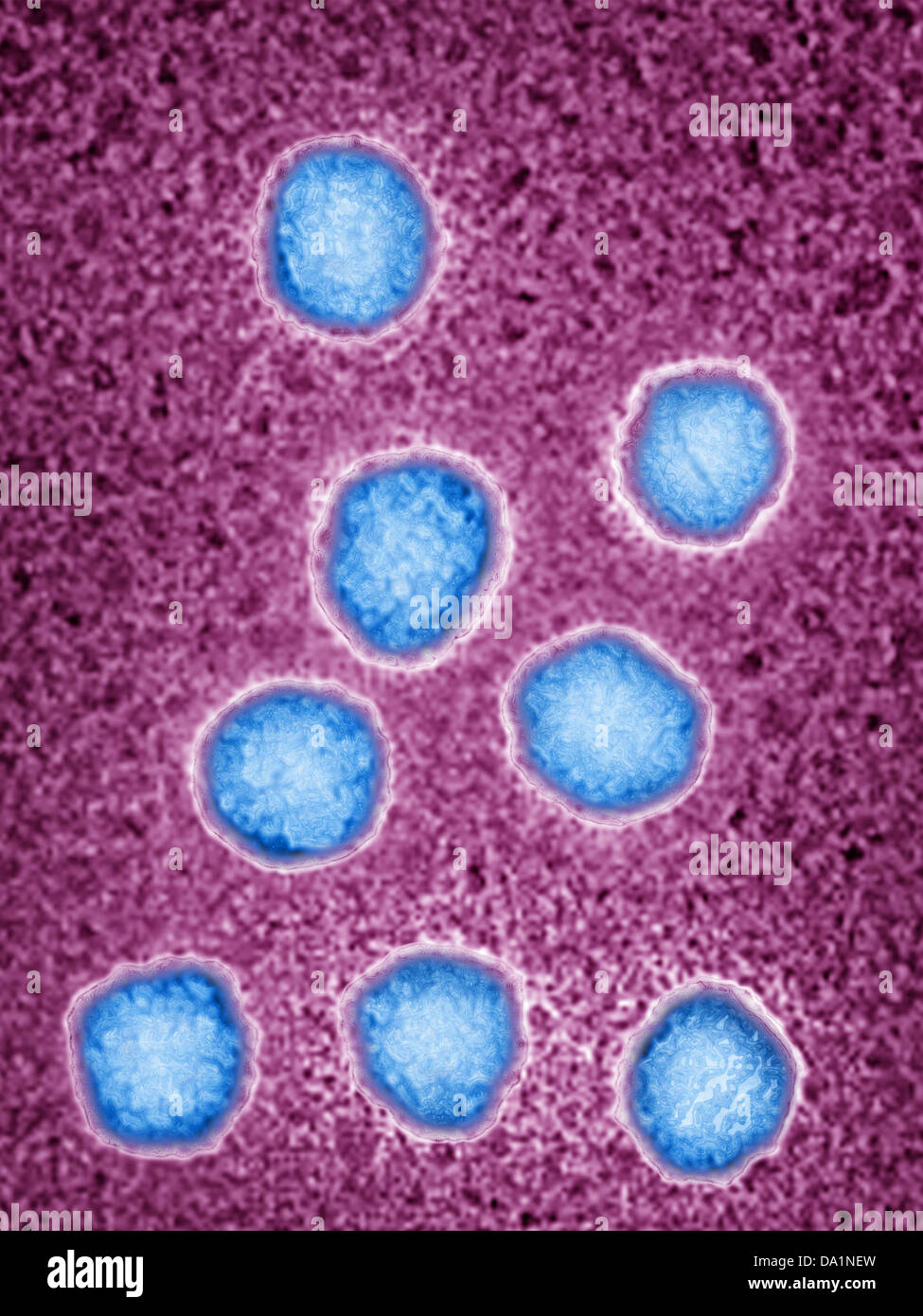 BUNYAVIRUS, TEM Stock Photohttps://www.alamy.com/image-license-details/?v=1https://www.alamy.com/stock-photo-bunyavirus-tem-57816497.html
BUNYAVIRUS, TEM Stock Photohttps://www.alamy.com/image-license-details/?v=1https://www.alamy.com/stock-photo-bunyavirus-tem-57816497.htmlRMDA1NEW–BUNYAVIRUS, TEM
 Rift Valley fever virus particles, computer illustration. This virus particle consists of an RNA (ribonucleic acid) genome enclosed in a protein capsid, which is itself surrounded by a glycoprotein envelope. Rift Valley fever occurs in Africa, infecting humans, cattle, sheep, rodents and other species. It is transmitted by insects, mainly mosquitoes, and causes chills, fever, a headache and joint and muscle pain. It is rarely fatal, but can cause retinal haemorrhages that may lead to visual impairment. Stock Photohttps://www.alamy.com/image-license-details/?v=1https://www.alamy.com/rift-valley-fever-virus-particles-computer-illustration-this-virus-particle-consists-of-an-rna-ribonucleic-acid-genome-enclosed-in-a-protein-capsid-which-is-itself-surrounded-by-a-glycoprotein-envelope-rift-valley-fever-occurs-in-africa-infecting-humans-cattle-sheep-rodents-and-other-species-it-is-transmitted-by-insects-mainly-mosquitoes-and-causes-chills-fever-a-headache-and-joint-and-muscle-pain-it-is-rarely-fatal-but-can-cause-retinal-haemorrhages-that-may-lead-to-visual-impairment-image364228139.html
Rift Valley fever virus particles, computer illustration. This virus particle consists of an RNA (ribonucleic acid) genome enclosed in a protein capsid, which is itself surrounded by a glycoprotein envelope. Rift Valley fever occurs in Africa, infecting humans, cattle, sheep, rodents and other species. It is transmitted by insects, mainly mosquitoes, and causes chills, fever, a headache and joint and muscle pain. It is rarely fatal, but can cause retinal haemorrhages that may lead to visual impairment. Stock Photohttps://www.alamy.com/image-license-details/?v=1https://www.alamy.com/rift-valley-fever-virus-particles-computer-illustration-this-virus-particle-consists-of-an-rna-ribonucleic-acid-genome-enclosed-in-a-protein-capsid-which-is-itself-surrounded-by-a-glycoprotein-envelope-rift-valley-fever-occurs-in-africa-infecting-humans-cattle-sheep-rodents-and-other-species-it-is-transmitted-by-insects-mainly-mosquitoes-and-causes-chills-fever-a-headache-and-joint-and-muscle-pain-it-is-rarely-fatal-but-can-cause-retinal-haemorrhages-that-may-lead-to-visual-impairment-image364228139.htmlRF2C4G0KR–Rift Valley fever virus particles, computer illustration. This virus particle consists of an RNA (ribonucleic acid) genome enclosed in a protein capsid, which is itself surrounded by a glycoprotein envelope. Rift Valley fever occurs in Africa, infecting humans, cattle, sheep, rodents and other species. It is transmitted by insects, mainly mosquitoes, and causes chills, fever, a headache and joint and muscle pain. It is rarely fatal, but can cause retinal haemorrhages that may lead to visual impairment.
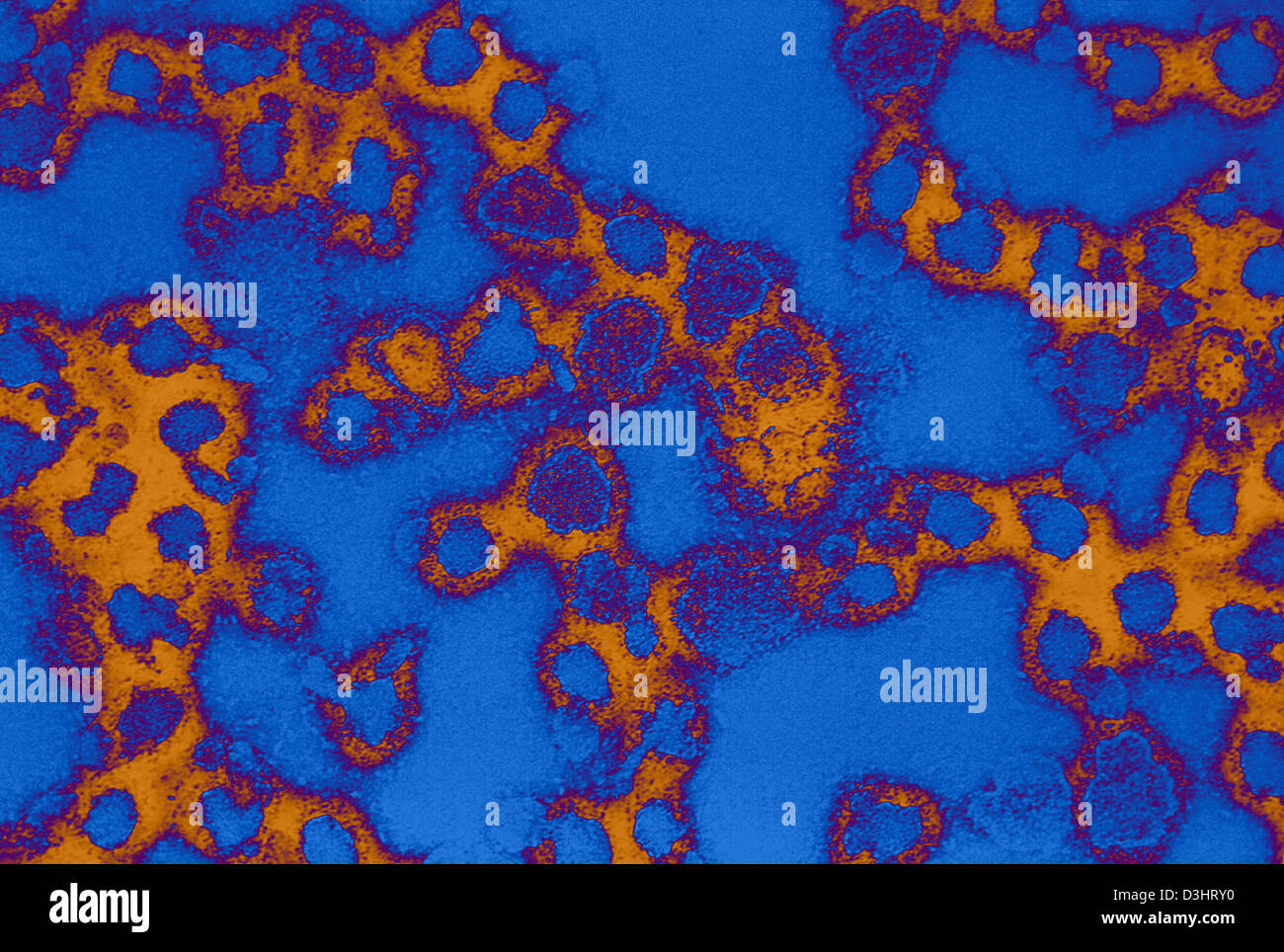 LA CROSSE VIRUS Stock Photohttps://www.alamy.com/image-license-details/?v=1https://www.alamy.com/stock-photo-la-crosse-virus-53867044.html
LA CROSSE VIRUS Stock Photohttps://www.alamy.com/image-license-details/?v=1https://www.alamy.com/stock-photo-la-crosse-virus-53867044.htmlRFD3HRY0–LA CROSSE VIRUS
 Negatively-stained transmission electron micrograph (TEM) of La Crosse (LAC) encephalitis virus Ribonucleoprotein Particles Stock Photohttps://www.alamy.com/image-license-details/?v=1https://www.alamy.com/stock-photo-negatively-stained-transmission-electron-micrograph-tem-of-la-crosse-30204824.html
Negatively-stained transmission electron micrograph (TEM) of La Crosse (LAC) encephalitis virus Ribonucleoprotein Particles Stock Photohttps://www.alamy.com/image-license-details/?v=1https://www.alamy.com/stock-photo-negatively-stained-transmission-electron-micrograph-tem-of-la-crosse-30204824.htmlRMBN3XFM–Negatively-stained transmission electron micrograph (TEM) of La Crosse (LAC) encephalitis virus Ribonucleoprotein Particles
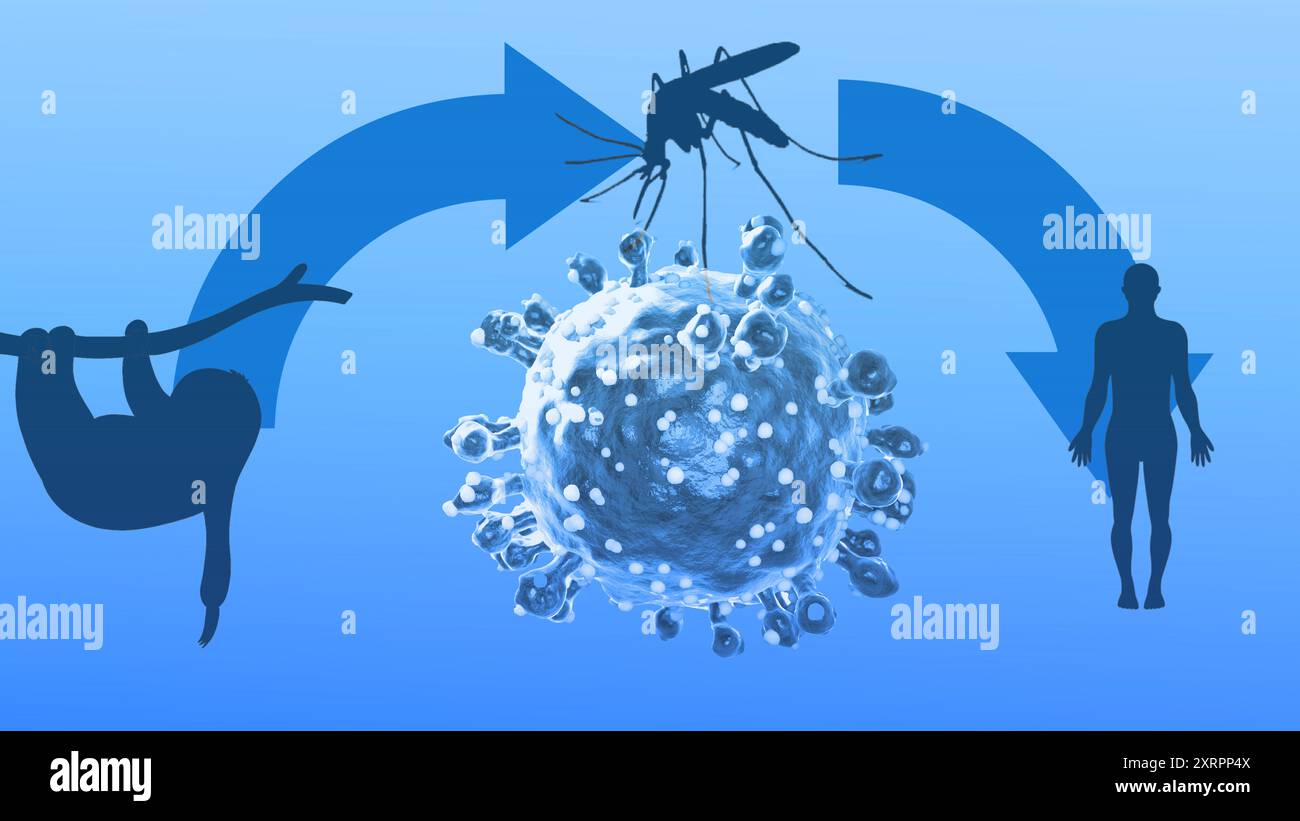 Oropouche virus that causes Oropouche fever, an emergent disease from the Americas Stock Photohttps://www.alamy.com/image-license-details/?v=1https://www.alamy.com/oropouche-virus-that-causes-oropouche-fever-an-emergent-disease-from-the-americas-image617000298.html
Oropouche virus that causes Oropouche fever, an emergent disease from the Americas Stock Photohttps://www.alamy.com/image-license-details/?v=1https://www.alamy.com/oropouche-virus-that-causes-oropouche-fever-an-emergent-disease-from-the-americas-image617000298.htmlRF2XRPP4X–Oropouche virus that causes Oropouche fever, an emergent disease from the Americas
 Coloured transmission electron micrograph (TEM) of Crimean- Congo haemorrhagic fever (CCHF) viruses (brown). CCHF is transmitted to humans when they a Stock Photohttps://www.alamy.com/image-license-details/?v=1https://www.alamy.com/coloured-transmission-electron-micrograph-tem-of-crimean-congo-haemorrhagic-fever-cchf-viruses-brown-cchf-is-transmitted-to-humans-when-they-a-image381596755.html
Coloured transmission electron micrograph (TEM) of Crimean- Congo haemorrhagic fever (CCHF) viruses (brown). CCHF is transmitted to humans when they a Stock Photohttps://www.alamy.com/image-license-details/?v=1https://www.alamy.com/coloured-transmission-electron-micrograph-tem-of-crimean-congo-haemorrhagic-fever-cchf-viruses-brown-cchf-is-transmitted-to-humans-when-they-a-image381596755.htmlRM2D4R6FF–Coloured transmission electron micrograph (TEM) of Crimean- Congo haemorrhagic fever (CCHF) viruses (brown). CCHF is transmitted to humans when they a
 TEM of La Crosse encephalitis virus Stock Photohttps://www.alamy.com/image-license-details/?v=1https://www.alamy.com/tem-of-la-crosse-encephalitis-virus-image65497633.html
TEM of La Crosse encephalitis virus Stock Photohttps://www.alamy.com/image-license-details/?v=1https://www.alamy.com/tem-of-la-crosse-encephalitis-virus-image65497633.htmlRFDPFJW5–TEM of La Crosse encephalitis virus
 SIN NOMBRE VIRUS Stock Photohttps://www.alamy.com/image-license-details/?v=1https://www.alamy.com/stock-photo-sin-nombre-virus-25569136.html
SIN NOMBRE VIRUS Stock Photohttps://www.alamy.com/image-license-details/?v=1https://www.alamy.com/stock-photo-sin-nombre-virus-25569136.htmlRFBDGNKC–SIN NOMBRE VIRUS
 Hantavirus particles, computer illustration. Several hantaviruses cause disease in humans. They can be fatal if they progress to either hantavirus pul Stock Photohttps://www.alamy.com/image-license-details/?v=1https://www.alamy.com/hantavirus-particles-computer-illustration-several-hantaviruses-cause-disease-in-humans-they-can-be-fatal-if-they-progress-to-either-hantavirus-pul-image554736858.html
Hantavirus particles, computer illustration. Several hantaviruses cause disease in humans. They can be fatal if they progress to either hantavirus pul Stock Photohttps://www.alamy.com/image-license-details/?v=1https://www.alamy.com/hantavirus-particles-computer-illustration-several-hantaviruses-cause-disease-in-humans-they-can-be-fatal-if-they-progress-to-either-hantavirus-pul-image554736858.htmlRF2R6ECEJ–Hantavirus particles, computer illustration. Several hantaviruses cause disease in humans. They can be fatal if they progress to either hantavirus pul
 Hantavirus, TEM Stock Photohttps://www.alamy.com/image-license-details/?v=1https://www.alamy.com/stock-photo-hantavirus-tem-134943153.html
Hantavirus, TEM Stock Photohttps://www.alamy.com/image-license-details/?v=1https://www.alamy.com/stock-photo-hantavirus-tem-134943153.htmlRMHRF5A9–Hantavirus, TEM
 Rift Valley fever virus particles, computer illustration. This virus particle consists of an RNA (ribonucleic acid) genome enclosed in a protein capsid, which is itself surrounded by a glycoprotein envelope. Rift Valley fever occurs in Africa, infecting humans, cattle, sheep, rodents and other species. It is transmitted by insects, mainly mosquitoes, and causes chills, fever, a headache and joint and muscle pain. It is rarely fatal, but can cause retinal haemorrhages that may lead to visual impairment. Stock Photohttps://www.alamy.com/image-license-details/?v=1https://www.alamy.com/rift-valley-fever-virus-particles-computer-illustration-this-virus-particle-consists-of-an-rna-ribonucleic-acid-genome-enclosed-in-a-protein-capsid-which-is-itself-surrounded-by-a-glycoprotein-envelope-rift-valley-fever-occurs-in-africa-infecting-humans-cattle-sheep-rodents-and-other-species-it-is-transmitted-by-insects-mainly-mosquitoes-and-causes-chills-fever-a-headache-and-joint-and-muscle-pain-it-is-rarely-fatal-but-can-cause-retinal-haemorrhages-that-may-lead-to-visual-impairment-image364228117.html
Rift Valley fever virus particles, computer illustration. This virus particle consists of an RNA (ribonucleic acid) genome enclosed in a protein capsid, which is itself surrounded by a glycoprotein envelope. Rift Valley fever occurs in Africa, infecting humans, cattle, sheep, rodents and other species. It is transmitted by insects, mainly mosquitoes, and causes chills, fever, a headache and joint and muscle pain. It is rarely fatal, but can cause retinal haemorrhages that may lead to visual impairment. Stock Photohttps://www.alamy.com/image-license-details/?v=1https://www.alamy.com/rift-valley-fever-virus-particles-computer-illustration-this-virus-particle-consists-of-an-rna-ribonucleic-acid-genome-enclosed-in-a-protein-capsid-which-is-itself-surrounded-by-a-glycoprotein-envelope-rift-valley-fever-occurs-in-africa-infecting-humans-cattle-sheep-rodents-and-other-species-it-is-transmitted-by-insects-mainly-mosquitoes-and-causes-chills-fever-a-headache-and-joint-and-muscle-pain-it-is-rarely-fatal-but-can-cause-retinal-haemorrhages-that-may-lead-to-visual-impairment-image364228117.htmlRF2C4G0K1–Rift Valley fever virus particles, computer illustration. This virus particle consists of an RNA (ribonucleic acid) genome enclosed in a protein capsid, which is itself surrounded by a glycoprotein envelope. Rift Valley fever occurs in Africa, infecting humans, cattle, sheep, rodents and other species. It is transmitted by insects, mainly mosquitoes, and causes chills, fever, a headache and joint and muscle pain. It is rarely fatal, but can cause retinal haemorrhages that may lead to visual impairment.
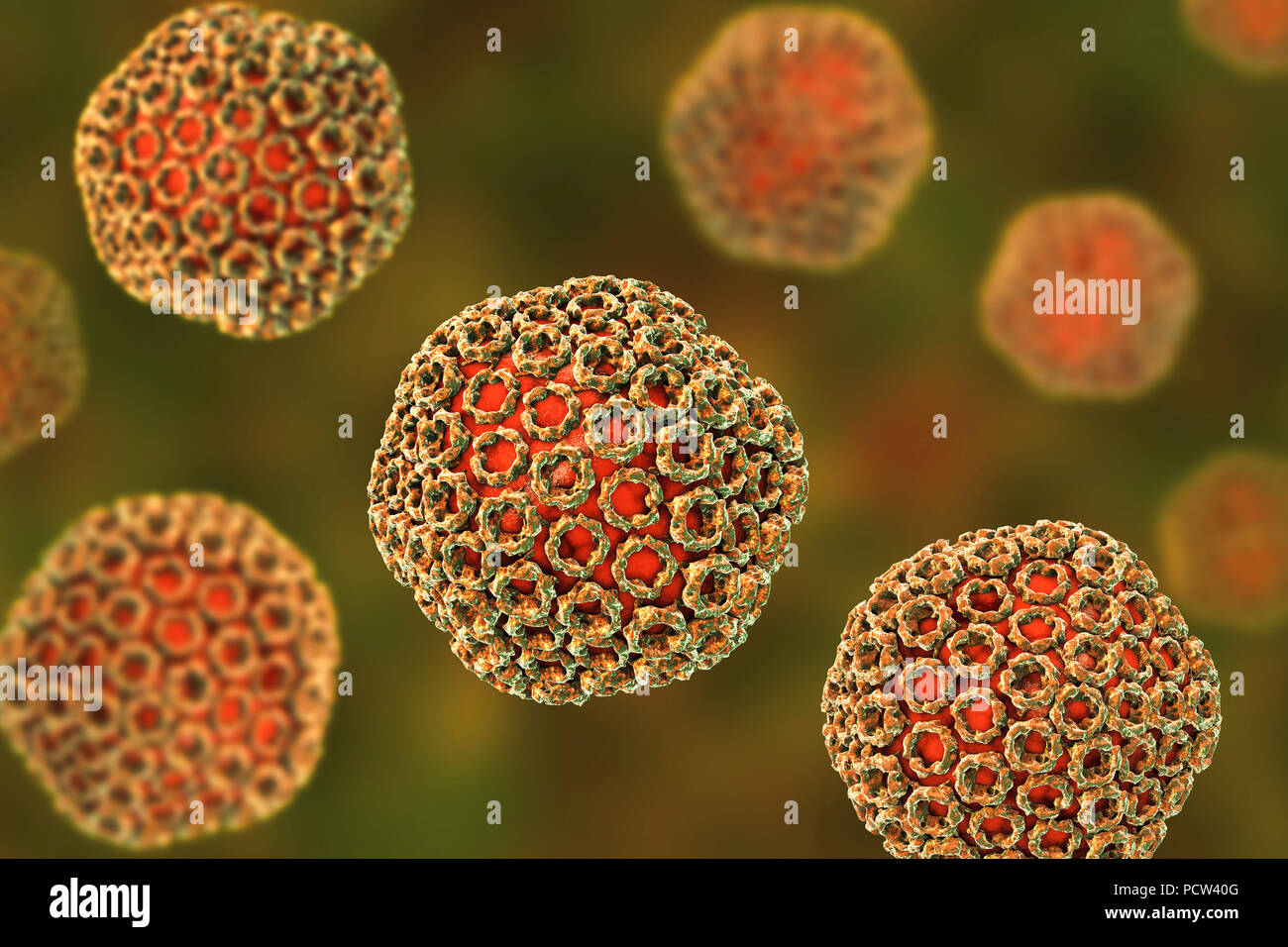 Rift Valley fever virus particles, computer illustration. This virus particle consists of an RNA (ribonucleic acid) genome enclosed in a protein capsid, which is itself surrounded by a glycoprotein envelope. Rift Valley fever occurs in Africa, infecting humans, cattle, sheep, rodents and other species. It is transmitted by insects, mainly mosquitoes, and causes chills, fever, a headache and joint and muscle pain. It is rarely fatal, but can cause retinal haemorrhages that may lead to visual impairment. Stock Photohttps://www.alamy.com/image-license-details/?v=1https://www.alamy.com/rift-valley-fever-virus-particles-computer-illustration-this-virus-particle-consists-of-an-rna-ribonucleic-acid-genome-enclosed-in-a-protein-capsid-which-is-itself-surrounded-by-a-glycoprotein-envelope-rift-valley-fever-occurs-in-africa-infecting-humans-cattle-sheep-rodents-and-other-species-it-is-transmitted-by-insects-mainly-mosquitoes-and-causes-chills-fever-a-headache-and-joint-and-muscle-pain-it-is-rarely-fatal-but-can-cause-retinal-haemorrhages-that-may-lead-to-visual-impairment-image214452240.html
Rift Valley fever virus particles, computer illustration. This virus particle consists of an RNA (ribonucleic acid) genome enclosed in a protein capsid, which is itself surrounded by a glycoprotein envelope. Rift Valley fever occurs in Africa, infecting humans, cattle, sheep, rodents and other species. It is transmitted by insects, mainly mosquitoes, and causes chills, fever, a headache and joint and muscle pain. It is rarely fatal, but can cause retinal haemorrhages that may lead to visual impairment. Stock Photohttps://www.alamy.com/image-license-details/?v=1https://www.alamy.com/rift-valley-fever-virus-particles-computer-illustration-this-virus-particle-consists-of-an-rna-ribonucleic-acid-genome-enclosed-in-a-protein-capsid-which-is-itself-surrounded-by-a-glycoprotein-envelope-rift-valley-fever-occurs-in-africa-infecting-humans-cattle-sheep-rodents-and-other-species-it-is-transmitted-by-insects-mainly-mosquitoes-and-causes-chills-fever-a-headache-and-joint-and-muscle-pain-it-is-rarely-fatal-but-can-cause-retinal-haemorrhages-that-may-lead-to-visual-impairment-image214452240.htmlRFPCW40G–Rift Valley fever virus particles, computer illustration. This virus particle consists of an RNA (ribonucleic acid) genome enclosed in a protein capsid, which is itself surrounded by a glycoprotein envelope. Rift Valley fever occurs in Africa, infecting humans, cattle, sheep, rodents and other species. It is transmitted by insects, mainly mosquitoes, and causes chills, fever, a headache and joint and muscle pain. It is rarely fatal, but can cause retinal haemorrhages that may lead to visual impairment.
 Negatively-stained transmission electron micrograph (TEM) of La Crosse (LAC) encephalitis virus Ribonucleoprotein Particles Stock Photohttps://www.alamy.com/image-license-details/?v=1https://www.alamy.com/stock-photo-negatively-stained-transmission-electron-micrograph-tem-of-la-crosse-30204818.html
Negatively-stained transmission electron micrograph (TEM) of La Crosse (LAC) encephalitis virus Ribonucleoprotein Particles Stock Photohttps://www.alamy.com/image-license-details/?v=1https://www.alamy.com/stock-photo-negatively-stained-transmission-electron-micrograph-tem-of-la-crosse-30204818.htmlRMBN3XFE–Negatively-stained transmission electron micrograph (TEM) of La Crosse (LAC) encephalitis virus Ribonucleoprotein Particles
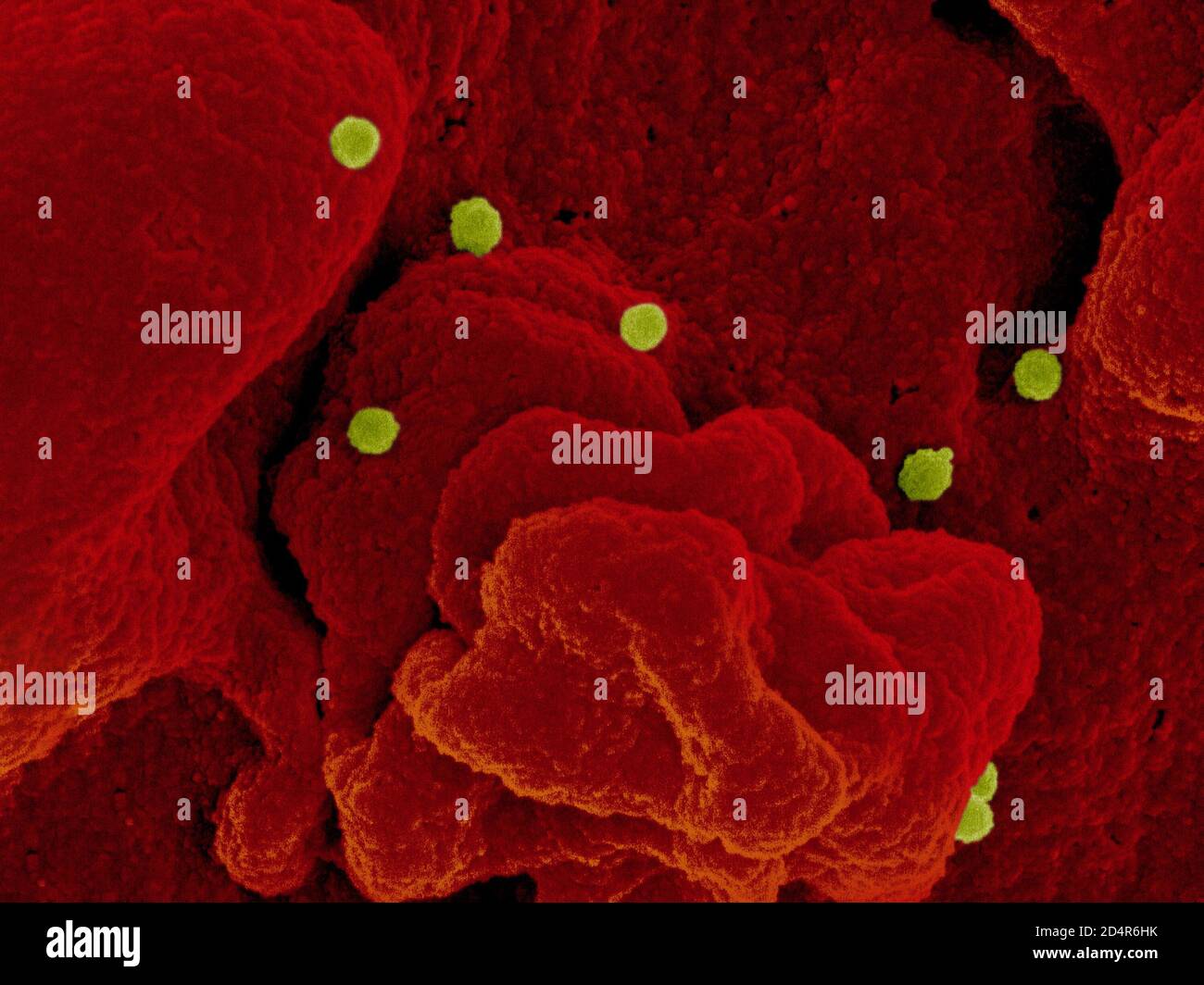 Coloured transmission electron micrograph (TEM) of Crimean- Congo haemorrhagic fever (CCHF) viruses (brown). CCHF is transmitted to humans when they a Stock Photohttps://www.alamy.com/image-license-details/?v=1https://www.alamy.com/coloured-transmission-electron-micrograph-tem-of-crimean-congo-haemorrhagic-fever-cchf-viruses-brown-cchf-is-transmitted-to-humans-when-they-a-image381596815.html
Coloured transmission electron micrograph (TEM) of Crimean- Congo haemorrhagic fever (CCHF) viruses (brown). CCHF is transmitted to humans when they a Stock Photohttps://www.alamy.com/image-license-details/?v=1https://www.alamy.com/coloured-transmission-electron-micrograph-tem-of-crimean-congo-haemorrhagic-fever-cchf-viruses-brown-cchf-is-transmitted-to-humans-when-they-a-image381596815.htmlRM2D4R6HK–Coloured transmission electron micrograph (TEM) of Crimean- Congo haemorrhagic fever (CCHF) viruses (brown). CCHF is transmitted to humans when they a
 SIN NOMBRE VIRUS Stock Photohttps://www.alamy.com/image-license-details/?v=1https://www.alamy.com/stock-photo-sin-nombre-virus-53863198.html
SIN NOMBRE VIRUS Stock Photohttps://www.alamy.com/image-license-details/?v=1https://www.alamy.com/stock-photo-sin-nombre-virus-53863198.htmlRMD3HK1J–SIN NOMBRE VIRUS
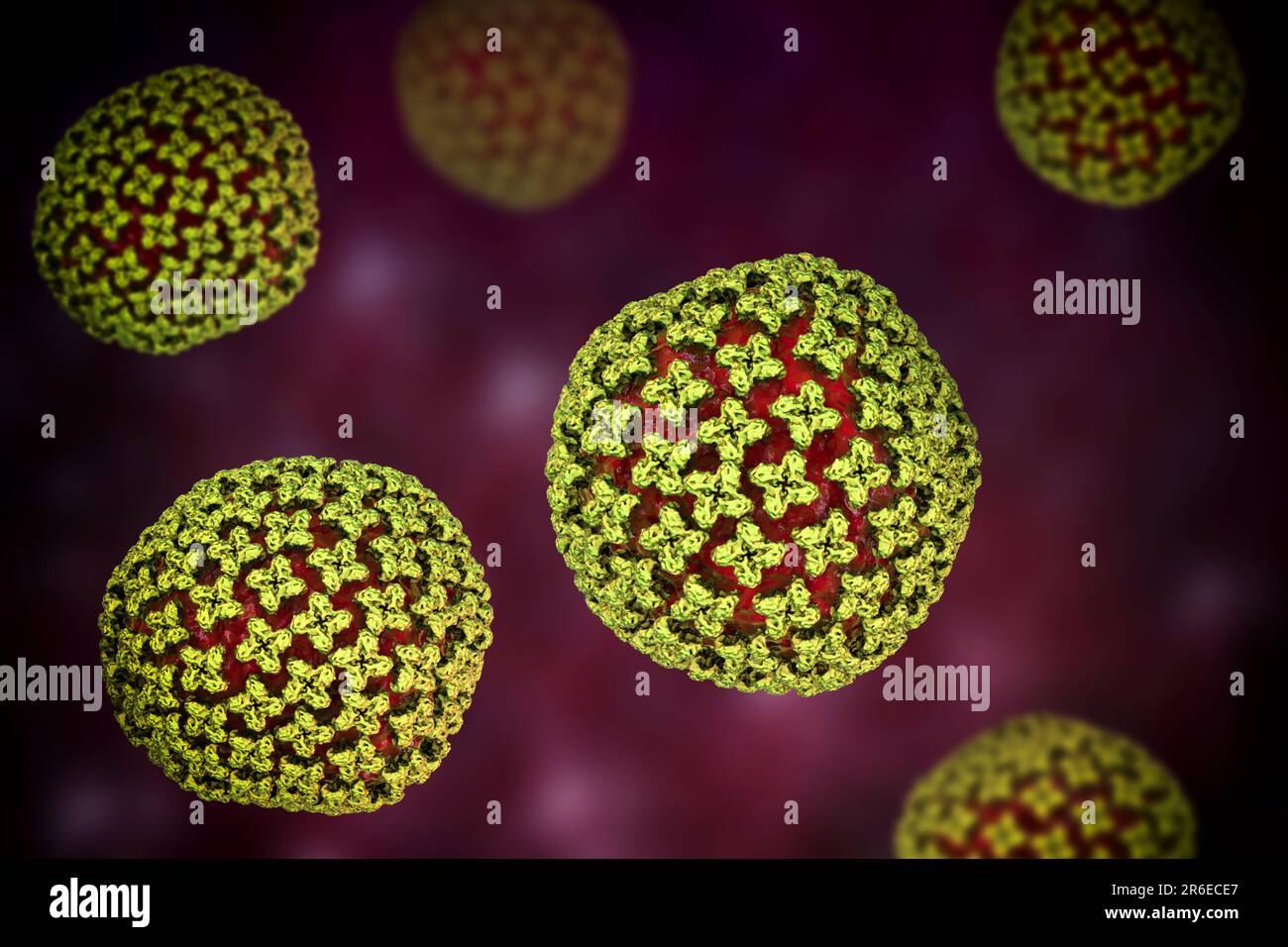 Hantavirus particles, computer illustration. Several hantaviruses cause disease in humans. They can be fatal if they progress to either hantavirus pul Stock Photohttps://www.alamy.com/image-license-details/?v=1https://www.alamy.com/hantavirus-particles-computer-illustration-several-hantaviruses-cause-disease-in-humans-they-can-be-fatal-if-they-progress-to-either-hantavirus-pul-image554736847.html
Hantavirus particles, computer illustration. Several hantaviruses cause disease in humans. They can be fatal if they progress to either hantavirus pul Stock Photohttps://www.alamy.com/image-license-details/?v=1https://www.alamy.com/hantavirus-particles-computer-illustration-several-hantaviruses-cause-disease-in-humans-they-can-be-fatal-if-they-progress-to-either-hantavirus-pul-image554736847.htmlRF2R6ECE7–Hantavirus particles, computer illustration. Several hantaviruses cause disease in humans. They can be fatal if they progress to either hantavirus pul
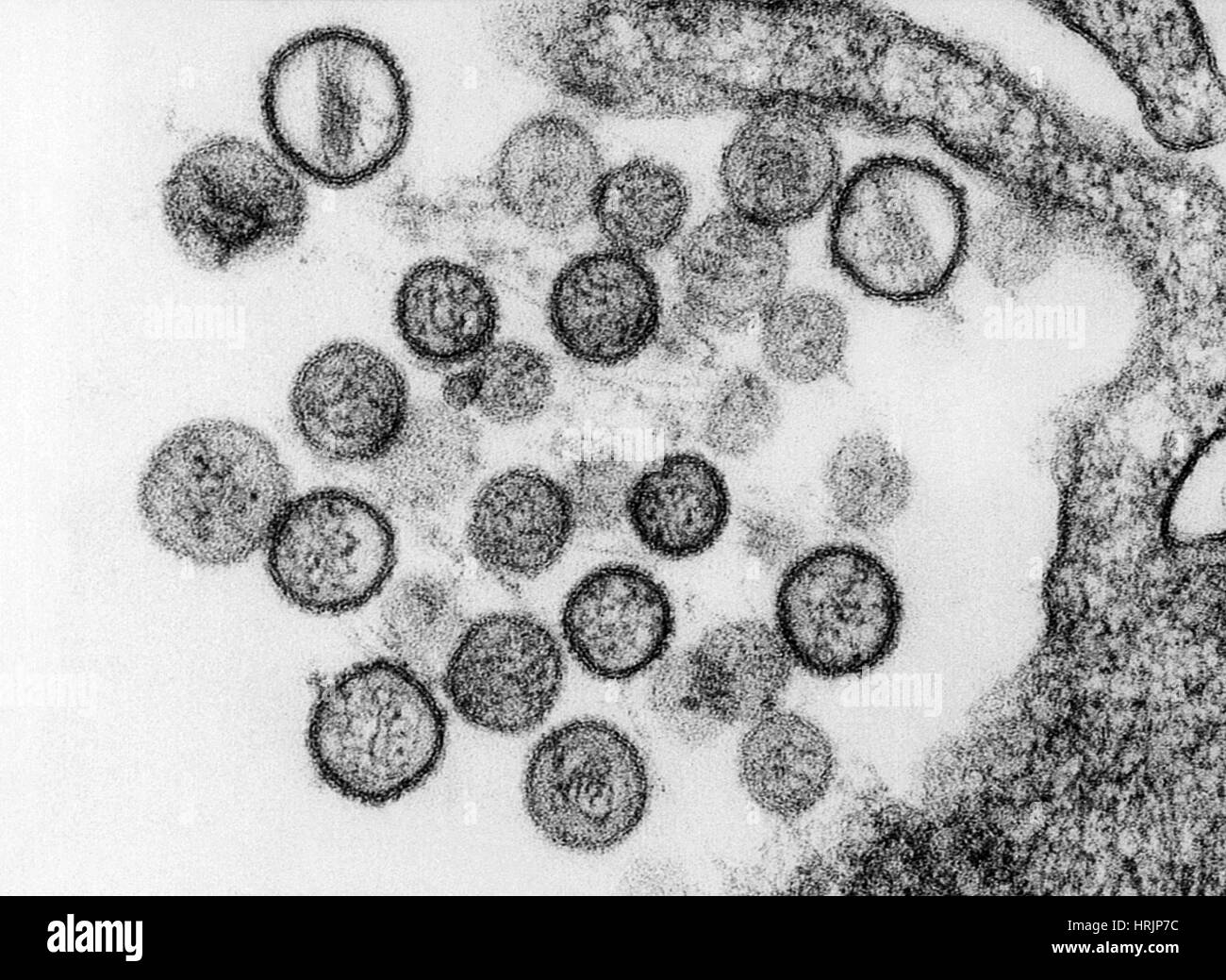 Sin Nombre Virus, TEM Stock Photohttps://www.alamy.com/image-license-details/?v=1https://www.alamy.com/stock-photo-sin-nombre-virus-tem-135022256.html
Sin Nombre Virus, TEM Stock Photohttps://www.alamy.com/image-license-details/?v=1https://www.alamy.com/stock-photo-sin-nombre-virus-tem-135022256.htmlRMHRJP7C–Sin Nombre Virus, TEM
 Rift Valley fever virus particles, computer illustration. This virus particle consists of an RNA (ribonucleic acid) genome enclosed in a protein capsid, which is itself surrounded by a glycoprotein envelope. Rift Valley fever occurs in Africa, infecting humans, cattle, sheep, rodents and other species. It is transmitted by insects, mainly mosquitoes, and causes chills, fever, a headache and joint and muscle pain. It is rarely fatal, but can cause retinal haemorrhages that may lead to visual impairment. Stock Photohttps://www.alamy.com/image-license-details/?v=1https://www.alamy.com/rift-valley-fever-virus-particles-computer-illustration-this-virus-particle-consists-of-an-rna-ribonucleic-acid-genome-enclosed-in-a-protein-capsid-which-is-itself-surrounded-by-a-glycoprotein-envelope-rift-valley-fever-occurs-in-africa-infecting-humans-cattle-sheep-rodents-and-other-species-it-is-transmitted-by-insects-mainly-mosquitoes-and-causes-chills-fever-a-headache-and-joint-and-muscle-pain-it-is-rarely-fatal-but-can-cause-retinal-haemorrhages-that-may-lead-to-visual-impairment-image214452239.html
Rift Valley fever virus particles, computer illustration. This virus particle consists of an RNA (ribonucleic acid) genome enclosed in a protein capsid, which is itself surrounded by a glycoprotein envelope. Rift Valley fever occurs in Africa, infecting humans, cattle, sheep, rodents and other species. It is transmitted by insects, mainly mosquitoes, and causes chills, fever, a headache and joint and muscle pain. It is rarely fatal, but can cause retinal haemorrhages that may lead to visual impairment. Stock Photohttps://www.alamy.com/image-license-details/?v=1https://www.alamy.com/rift-valley-fever-virus-particles-computer-illustration-this-virus-particle-consists-of-an-rna-ribonucleic-acid-genome-enclosed-in-a-protein-capsid-which-is-itself-surrounded-by-a-glycoprotein-envelope-rift-valley-fever-occurs-in-africa-infecting-humans-cattle-sheep-rodents-and-other-species-it-is-transmitted-by-insects-mainly-mosquitoes-and-causes-chills-fever-a-headache-and-joint-and-muscle-pain-it-is-rarely-fatal-but-can-cause-retinal-haemorrhages-that-may-lead-to-visual-impairment-image214452239.htmlRFPCW40F–Rift Valley fever virus particles, computer illustration. This virus particle consists of an RNA (ribonucleic acid) genome enclosed in a protein capsid, which is itself surrounded by a glycoprotein envelope. Rift Valley fever occurs in Africa, infecting humans, cattle, sheep, rodents and other species. It is transmitted by insects, mainly mosquitoes, and causes chills, fever, a headache and joint and muscle pain. It is rarely fatal, but can cause retinal haemorrhages that may lead to visual impairment.
 SIN NOMBRE VIRUS Stock Photohttps://www.alamy.com/image-license-details/?v=1https://www.alamy.com/stock-photo-sin-nombre-virus-25569134.html
SIN NOMBRE VIRUS Stock Photohttps://www.alamy.com/image-license-details/?v=1https://www.alamy.com/stock-photo-sin-nombre-virus-25569134.htmlRFBDGNKA–SIN NOMBRE VIRUS
 LA CROSSE VIRUS Stock Photohttps://www.alamy.com/image-license-details/?v=1https://www.alamy.com/stock-photo-la-crosse-virus-53859046.html
LA CROSSE VIRUS Stock Photohttps://www.alamy.com/image-license-details/?v=1https://www.alamy.com/stock-photo-la-crosse-virus-53859046.htmlRMD3HDNA–LA CROSSE VIRUS
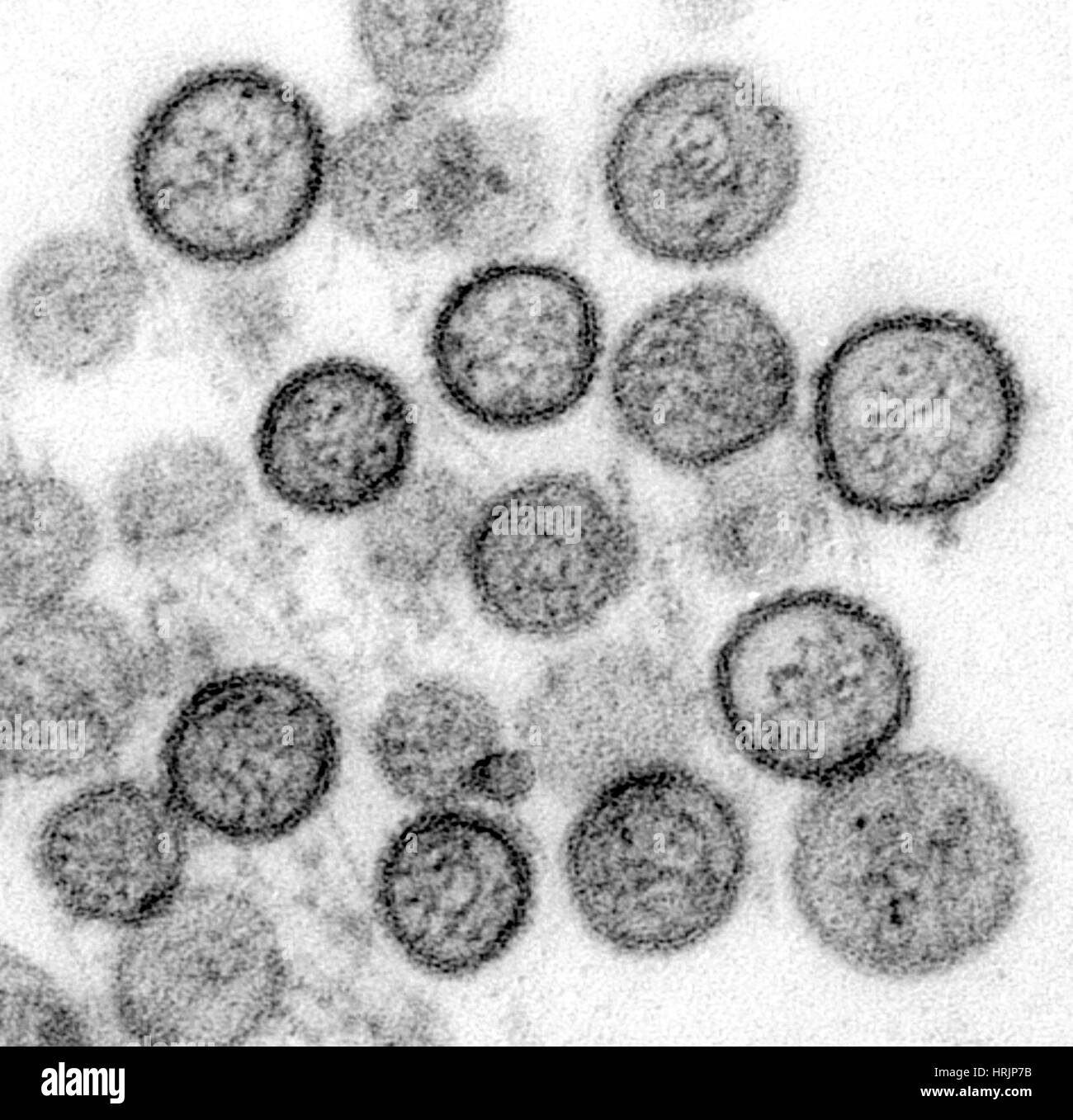 Sin Nombre Virus, TEM Stock Photohttps://www.alamy.com/image-license-details/?v=1https://www.alamy.com/stock-photo-sin-nombre-virus-tem-135022255.html
Sin Nombre Virus, TEM Stock Photohttps://www.alamy.com/image-license-details/?v=1https://www.alamy.com/stock-photo-sin-nombre-virus-tem-135022255.htmlRMHRJP7B–Sin Nombre Virus, TEM
 Rift Valley fever virus particles, computer illustration. This virus particle consists of an RNA (ribonucleic acid) genome enclosed in a protein capsid, which is itself surrounded by a glycoprotein envelope. Rift Valley fever occurs in Africa, infecting humans, cattle, sheep, rodents and other species. It is transmitted by insects, mainly mosquitoes, and causes chills, fever, a headache and joint and muscle pain. It is rarely fatal, but can cause retinal haemorrhages that may lead to visual impairment. Stock Photohttps://www.alamy.com/image-license-details/?v=1https://www.alamy.com/rift-valley-fever-virus-particles-computer-illustration-this-virus-particle-consists-of-an-rna-ribonucleic-acid-genome-enclosed-in-a-protein-capsid-which-is-itself-surrounded-by-a-glycoprotein-envelope-rift-valley-fever-occurs-in-africa-infecting-humans-cattle-sheep-rodents-and-other-species-it-is-transmitted-by-insects-mainly-mosquitoes-and-causes-chills-fever-a-headache-and-joint-and-muscle-pain-it-is-rarely-fatal-but-can-cause-retinal-haemorrhages-that-may-lead-to-visual-impairment-image214452237.html
Rift Valley fever virus particles, computer illustration. This virus particle consists of an RNA (ribonucleic acid) genome enclosed in a protein capsid, which is itself surrounded by a glycoprotein envelope. Rift Valley fever occurs in Africa, infecting humans, cattle, sheep, rodents and other species. It is transmitted by insects, mainly mosquitoes, and causes chills, fever, a headache and joint and muscle pain. It is rarely fatal, but can cause retinal haemorrhages that may lead to visual impairment. Stock Photohttps://www.alamy.com/image-license-details/?v=1https://www.alamy.com/rift-valley-fever-virus-particles-computer-illustration-this-virus-particle-consists-of-an-rna-ribonucleic-acid-genome-enclosed-in-a-protein-capsid-which-is-itself-surrounded-by-a-glycoprotein-envelope-rift-valley-fever-occurs-in-africa-infecting-humans-cattle-sheep-rodents-and-other-species-it-is-transmitted-by-insects-mainly-mosquitoes-and-causes-chills-fever-a-headache-and-joint-and-muscle-pain-it-is-rarely-fatal-but-can-cause-retinal-haemorrhages-that-may-lead-to-visual-impairment-image214452237.htmlRFPCW40D–Rift Valley fever virus particles, computer illustration. This virus particle consists of an RNA (ribonucleic acid) genome enclosed in a protein capsid, which is itself surrounded by a glycoprotein envelope. Rift Valley fever occurs in Africa, infecting humans, cattle, sheep, rodents and other species. It is transmitted by insects, mainly mosquitoes, and causes chills, fever, a headache and joint and muscle pain. It is rarely fatal, but can cause retinal haemorrhages that may lead to visual impairment.
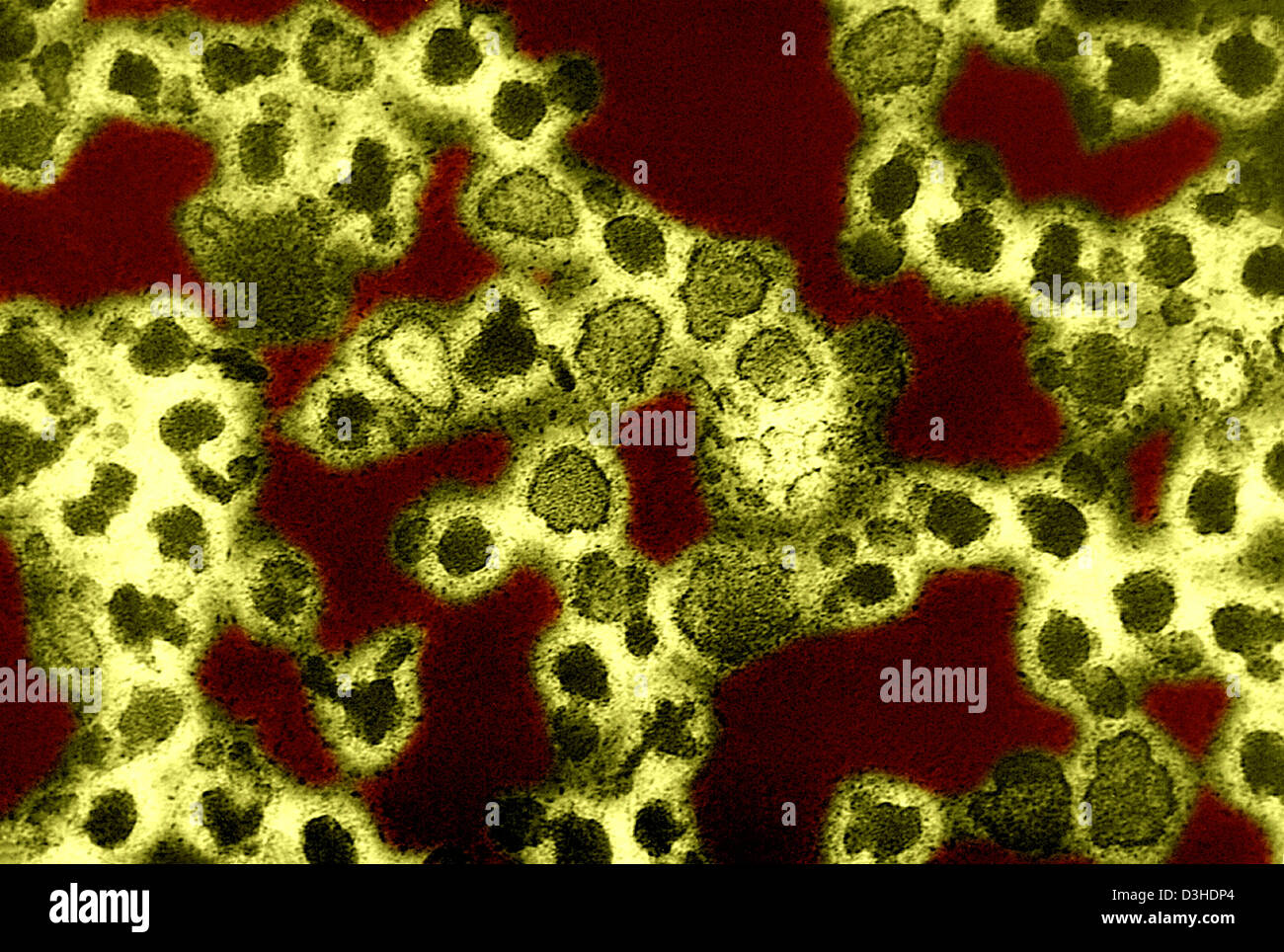 LA CROSSE VIRUS Stock Photohttps://www.alamy.com/image-license-details/?v=1https://www.alamy.com/stock-photo-la-crosse-virus-53859068.html
LA CROSSE VIRUS Stock Photohttps://www.alamy.com/image-license-details/?v=1https://www.alamy.com/stock-photo-la-crosse-virus-53859068.htmlRMD3HDP4–LA CROSSE VIRUS
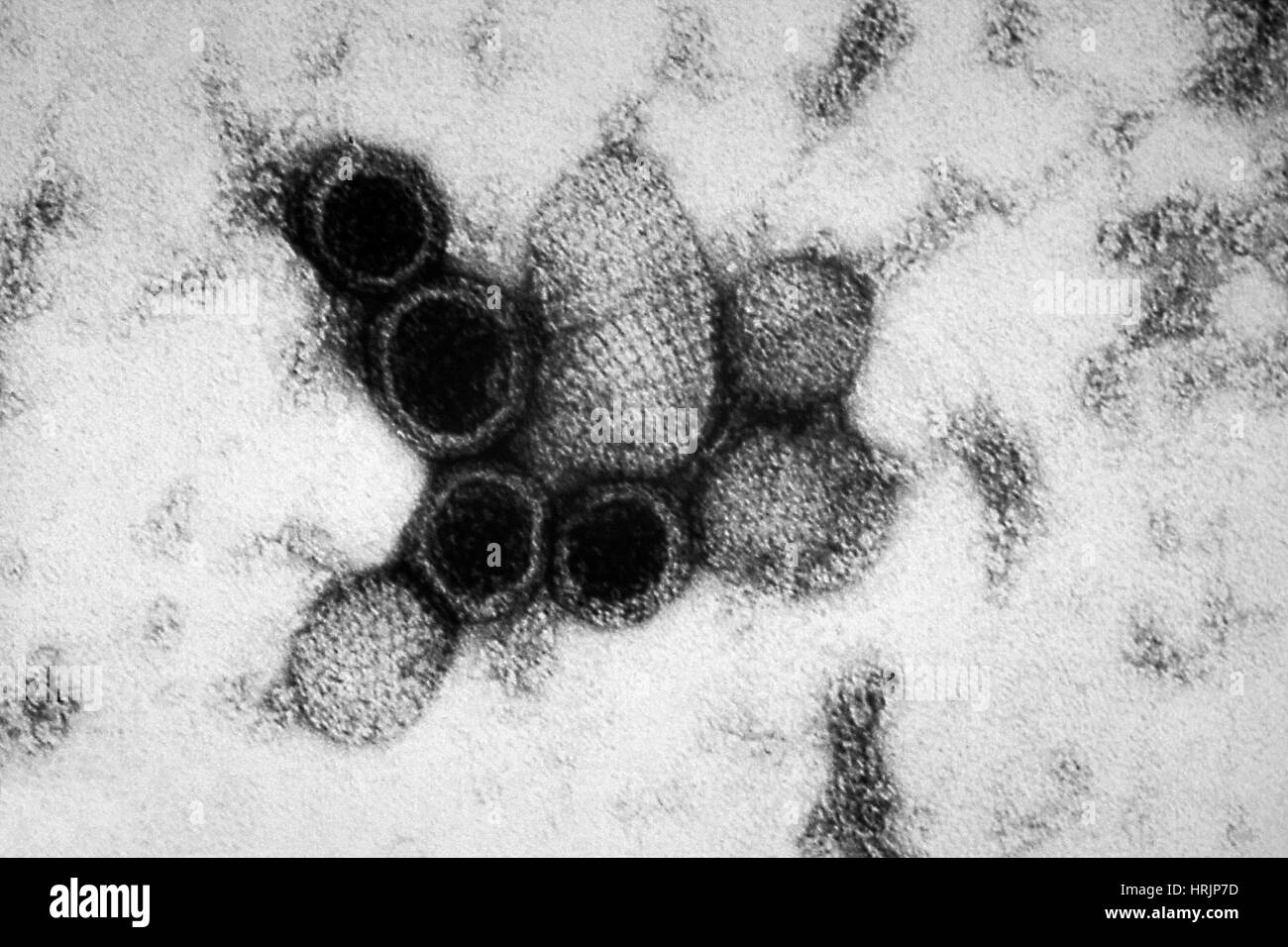 Sin Nombre Virus, TEM Stock Photohttps://www.alamy.com/image-license-details/?v=1https://www.alamy.com/stock-photo-sin-nombre-virus-tem-135022257.html
Sin Nombre Virus, TEM Stock Photohttps://www.alamy.com/image-license-details/?v=1https://www.alamy.com/stock-photo-sin-nombre-virus-tem-135022257.htmlRMHRJP7D–Sin Nombre Virus, TEM
 Rift Valley fever virus particles, computer illustration. This virus particle consists of an RNA (ribonucleic acid) genome enclosed in a protein capsid, which is itself surrounded by a glycoprotein envelope. Rift Valley fever occurs in Africa, infecting humans, cattle, sheep, rodents and other species. It is transmitted by insects, mainly mosquitoes, and causes chills, fever, a headache and joint and muscle pain. It is rarely fatal, but can cause retinal haemorrhages that may lead to visual impairment. Stock Photohttps://www.alamy.com/image-license-details/?v=1https://www.alamy.com/rift-valley-fever-virus-particles-computer-illustration-this-virus-particle-consists-of-an-rna-ribonucleic-acid-genome-enclosed-in-a-protein-capsid-which-is-itself-surrounded-by-a-glycoprotein-envelope-rift-valley-fever-occurs-in-africa-infecting-humans-cattle-sheep-rodents-and-other-species-it-is-transmitted-by-insects-mainly-mosquitoes-and-causes-chills-fever-a-headache-and-joint-and-muscle-pain-it-is-rarely-fatal-but-can-cause-retinal-haemorrhages-that-may-lead-to-visual-impairment-image214452244.html
Rift Valley fever virus particles, computer illustration. This virus particle consists of an RNA (ribonucleic acid) genome enclosed in a protein capsid, which is itself surrounded by a glycoprotein envelope. Rift Valley fever occurs in Africa, infecting humans, cattle, sheep, rodents and other species. It is transmitted by insects, mainly mosquitoes, and causes chills, fever, a headache and joint and muscle pain. It is rarely fatal, but can cause retinal haemorrhages that may lead to visual impairment. Stock Photohttps://www.alamy.com/image-license-details/?v=1https://www.alamy.com/rift-valley-fever-virus-particles-computer-illustration-this-virus-particle-consists-of-an-rna-ribonucleic-acid-genome-enclosed-in-a-protein-capsid-which-is-itself-surrounded-by-a-glycoprotein-envelope-rift-valley-fever-occurs-in-africa-infecting-humans-cattle-sheep-rodents-and-other-species-it-is-transmitted-by-insects-mainly-mosquitoes-and-causes-chills-fever-a-headache-and-joint-and-muscle-pain-it-is-rarely-fatal-but-can-cause-retinal-haemorrhages-that-may-lead-to-visual-impairment-image214452244.htmlRFPCW40M–Rift Valley fever virus particles, computer illustration. This virus particle consists of an RNA (ribonucleic acid) genome enclosed in a protein capsid, which is itself surrounded by a glycoprotein envelope. Rift Valley fever occurs in Africa, infecting humans, cattle, sheep, rodents and other species. It is transmitted by insects, mainly mosquitoes, and causes chills, fever, a headache and joint and muscle pain. It is rarely fatal, but can cause retinal haemorrhages that may lead to visual impairment.
 Rift Valley fever virus particles, computer illustration. This virus particle consists of an RNA (ribonucleic acid) genome enclosed in a protein capsid, which is itself surrounded by a glycoprotein envelope. Rift Valley fever occurs in Africa, infecting humans, cattle, sheep, rodents and other species. It is transmitted by insects, mainly mosquitoes, and causes chills, fever, a headache and joint and muscle pain. It is rarely fatal, but can cause retinal haemorrhages that may lead to visual impairment. Stock Photohttps://www.alamy.com/image-license-details/?v=1https://www.alamy.com/rift-valley-fever-virus-particles-computer-illustration-this-virus-particle-consists-of-an-rna-ribonucleic-acid-genome-enclosed-in-a-protein-capsid-which-is-itself-surrounded-by-a-glycoprotein-envelope-rift-valley-fever-occurs-in-africa-infecting-humans-cattle-sheep-rodents-and-other-species-it-is-transmitted-by-insects-mainly-mosquitoes-and-causes-chills-fever-a-headache-and-joint-and-muscle-pain-it-is-rarely-fatal-but-can-cause-retinal-haemorrhages-that-may-lead-to-visual-impairment-image364228138.html
Rift Valley fever virus particles, computer illustration. This virus particle consists of an RNA (ribonucleic acid) genome enclosed in a protein capsid, which is itself surrounded by a glycoprotein envelope. Rift Valley fever occurs in Africa, infecting humans, cattle, sheep, rodents and other species. It is transmitted by insects, mainly mosquitoes, and causes chills, fever, a headache and joint and muscle pain. It is rarely fatal, but can cause retinal haemorrhages that may lead to visual impairment. Stock Photohttps://www.alamy.com/image-license-details/?v=1https://www.alamy.com/rift-valley-fever-virus-particles-computer-illustration-this-virus-particle-consists-of-an-rna-ribonucleic-acid-genome-enclosed-in-a-protein-capsid-which-is-itself-surrounded-by-a-glycoprotein-envelope-rift-valley-fever-occurs-in-africa-infecting-humans-cattle-sheep-rodents-and-other-species-it-is-transmitted-by-insects-mainly-mosquitoes-and-causes-chills-fever-a-headache-and-joint-and-muscle-pain-it-is-rarely-fatal-but-can-cause-retinal-haemorrhages-that-may-lead-to-visual-impairment-image364228138.htmlRF2C4G0KP–Rift Valley fever virus particles, computer illustration. This virus particle consists of an RNA (ribonucleic acid) genome enclosed in a protein capsid, which is itself surrounded by a glycoprotein envelope. Rift Valley fever occurs in Africa, infecting humans, cattle, sheep, rodents and other species. It is transmitted by insects, mainly mosquitoes, and causes chills, fever, a headache and joint and muscle pain. It is rarely fatal, but can cause retinal haemorrhages that may lead to visual impairment.
 Rift Valley fever virus particle, computer illustration. This virus particle consists of an RNA (ribonucleic acid) genome enclosed in a protein capsid, which is itself surrounded by a glycoprotein envelope. Rift Valley fever occurs in Africa, infecting humans, cattle, sheep, rodents and other species. It is transmitted by insects, mainly mosquitoes, and causes chills, fever, a headache and joint and muscle pain. It is rarely fatal, but can cause retinal haemorrhages that may lead to visual impairment. Stock Photohttps://www.alamy.com/image-license-details/?v=1https://www.alamy.com/rift-valley-fever-virus-particle-computer-illustration-this-virus-particle-consists-of-an-rna-ribonucleic-acid-genome-enclosed-in-a-protein-capsid-which-is-itself-surrounded-by-a-glycoprotein-envelope-rift-valley-fever-occurs-in-africa-infecting-humans-cattle-sheep-rodents-and-other-species-it-is-transmitted-by-insects-mainly-mosquitoes-and-causes-chills-fever-a-headache-and-joint-and-muscle-pain-it-is-rarely-fatal-but-can-cause-retinal-haemorrhages-that-may-lead-to-visual-impairment-image214452238.html
Rift Valley fever virus particle, computer illustration. This virus particle consists of an RNA (ribonucleic acid) genome enclosed in a protein capsid, which is itself surrounded by a glycoprotein envelope. Rift Valley fever occurs in Africa, infecting humans, cattle, sheep, rodents and other species. It is transmitted by insects, mainly mosquitoes, and causes chills, fever, a headache and joint and muscle pain. It is rarely fatal, but can cause retinal haemorrhages that may lead to visual impairment. Stock Photohttps://www.alamy.com/image-license-details/?v=1https://www.alamy.com/rift-valley-fever-virus-particle-computer-illustration-this-virus-particle-consists-of-an-rna-ribonucleic-acid-genome-enclosed-in-a-protein-capsid-which-is-itself-surrounded-by-a-glycoprotein-envelope-rift-valley-fever-occurs-in-africa-infecting-humans-cattle-sheep-rodents-and-other-species-it-is-transmitted-by-insects-mainly-mosquitoes-and-causes-chills-fever-a-headache-and-joint-and-muscle-pain-it-is-rarely-fatal-but-can-cause-retinal-haemorrhages-that-may-lead-to-visual-impairment-image214452238.htmlRFPCW40E–Rift Valley fever virus particle, computer illustration. This virus particle consists of an RNA (ribonucleic acid) genome enclosed in a protein capsid, which is itself surrounded by a glycoprotein envelope. Rift Valley fever occurs in Africa, infecting humans, cattle, sheep, rodents and other species. It is transmitted by insects, mainly mosquitoes, and causes chills, fever, a headache and joint and muscle pain. It is rarely fatal, but can cause retinal haemorrhages that may lead to visual impairment.
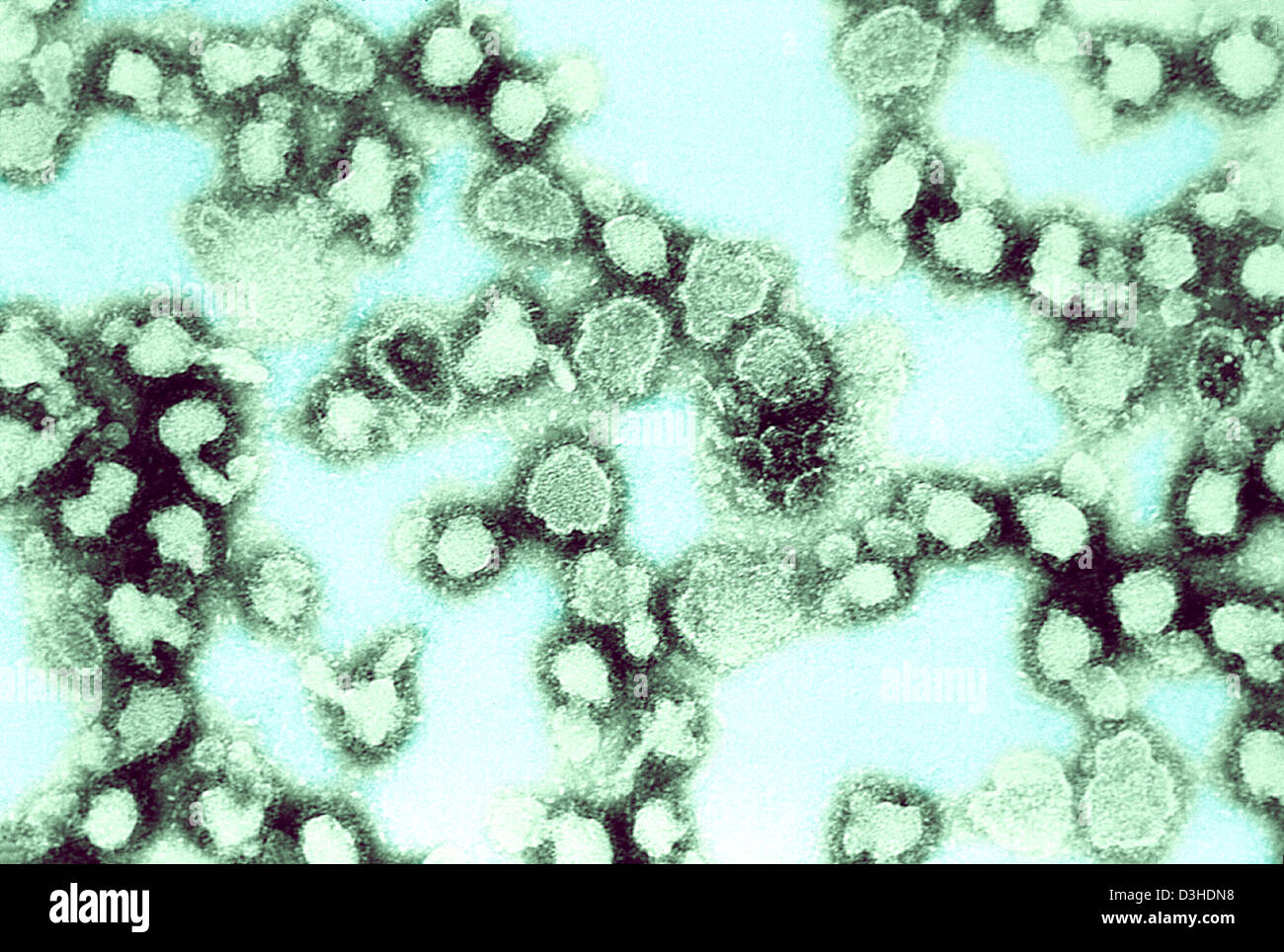 LA CROSSE VIRUS Stock Photohttps://www.alamy.com/image-license-details/?v=1https://www.alamy.com/stock-photo-la-crosse-virus-53859044.html
LA CROSSE VIRUS Stock Photohttps://www.alamy.com/image-license-details/?v=1https://www.alamy.com/stock-photo-la-crosse-virus-53859044.htmlRMD3HDN8–LA CROSSE VIRUS
 Hantavirus, TEM Stock Photohttps://www.alamy.com/image-license-details/?v=1https://www.alamy.com/stock-photo-hantavirus-tem-134943172.html
Hantavirus, TEM Stock Photohttps://www.alamy.com/image-license-details/?v=1https://www.alamy.com/stock-photo-hantavirus-tem-134943172.htmlRMHRF5B0–Hantavirus, TEM
 RIFT VALLEY FEVER VIRUS Stock Photohttps://www.alamy.com/image-license-details/?v=1https://www.alamy.com/stock-photo-rift-valley-fever-virus-49185040.html
RIFT VALLEY FEVER VIRUS Stock Photohttps://www.alamy.com/image-license-details/?v=1https://www.alamy.com/stock-photo-rift-valley-fever-virus-49185040.htmlRMCT0G0G–RIFT VALLEY FEVER VIRUS
 HANTAVIRUS Stock Photohttps://www.alamy.com/image-license-details/?v=1https://www.alamy.com/stock-photo-hantavirus-53866305.html
HANTAVIRUS Stock Photohttps://www.alamy.com/image-license-details/?v=1https://www.alamy.com/stock-photo-hantavirus-53866305.htmlRFD3HR0H–HANTAVIRUS
 Rift Valley fever virus particles, computer illustration. This virus particle consists of an RNA (ribonucleic acid) genome enclosed in a protein capsid, which is itself surrounded by a glycoprotein envelope. Rift Valley fever occurs in Africa, infecting humans, cattle, sheep, rodents and other species. It is transmitted by insects, mainly mosquitoes, and causes chills, fever, a headache and joint and muscle pain. It is rarely fatal, but can cause retinal haemorrhages that may lead to visual impairment. Stock Photohttps://www.alamy.com/image-license-details/?v=1https://www.alamy.com/rift-valley-fever-virus-particles-computer-illustration-this-virus-particle-consists-of-an-rna-ribonucleic-acid-genome-enclosed-in-a-protein-capsid-which-is-itself-surrounded-by-a-glycoprotein-envelope-rift-valley-fever-occurs-in-africa-infecting-humans-cattle-sheep-rodents-and-other-species-it-is-transmitted-by-insects-mainly-mosquitoes-and-causes-chills-fever-a-headache-and-joint-and-muscle-pain-it-is-rarely-fatal-but-can-cause-retinal-haemorrhages-that-may-lead-to-visual-impairment-image214452245.html
Rift Valley fever virus particles, computer illustration. This virus particle consists of an RNA (ribonucleic acid) genome enclosed in a protein capsid, which is itself surrounded by a glycoprotein envelope. Rift Valley fever occurs in Africa, infecting humans, cattle, sheep, rodents and other species. It is transmitted by insects, mainly mosquitoes, and causes chills, fever, a headache and joint and muscle pain. It is rarely fatal, but can cause retinal haemorrhages that may lead to visual impairment. Stock Photohttps://www.alamy.com/image-license-details/?v=1https://www.alamy.com/rift-valley-fever-virus-particles-computer-illustration-this-virus-particle-consists-of-an-rna-ribonucleic-acid-genome-enclosed-in-a-protein-capsid-which-is-itself-surrounded-by-a-glycoprotein-envelope-rift-valley-fever-occurs-in-africa-infecting-humans-cattle-sheep-rodents-and-other-species-it-is-transmitted-by-insects-mainly-mosquitoes-and-causes-chills-fever-a-headache-and-joint-and-muscle-pain-it-is-rarely-fatal-but-can-cause-retinal-haemorrhages-that-may-lead-to-visual-impairment-image214452245.htmlRFPCW40N–Rift Valley fever virus particles, computer illustration. This virus particle consists of an RNA (ribonucleic acid) genome enclosed in a protein capsid, which is itself surrounded by a glycoprotein envelope. Rift Valley fever occurs in Africa, infecting humans, cattle, sheep, rodents and other species. It is transmitted by insects, mainly mosquitoes, and causes chills, fever, a headache and joint and muscle pain. It is rarely fatal, but can cause retinal haemorrhages that may lead to visual impairment.
 Hantavirus, TEM Stock Photohttps://www.alamy.com/image-license-details/?v=1https://www.alamy.com/stock-photo-hantavirus-tem-134943211.html
Hantavirus, TEM Stock Photohttps://www.alamy.com/image-license-details/?v=1https://www.alamy.com/stock-photo-hantavirus-tem-134943211.htmlRMHRF5CB–Hantavirus, TEM
 HANTAVIRUS Stock Photohttps://www.alamy.com/image-license-details/?v=1https://www.alamy.com/stock-photo-hantavirus-53862272.html
HANTAVIRUS Stock Photohttps://www.alamy.com/image-license-details/?v=1https://www.alamy.com/stock-photo-hantavirus-53862272.htmlRMD3HHTG–HANTAVIRUS
 Hantavirus, TEM Stock Photohttps://www.alamy.com/image-license-details/?v=1https://www.alamy.com/stock-photo-hantavirus-tem-134943167.html
Hantavirus, TEM Stock Photohttps://www.alamy.com/image-license-details/?v=1https://www.alamy.com/stock-photo-hantavirus-tem-134943167.htmlRMHRF5AR–Hantavirus, TEM
 HANTAVIRUS Stock Photohttps://www.alamy.com/image-license-details/?v=1https://www.alamy.com/stock-photo-hantavirus-53866302.html
HANTAVIRUS Stock Photohttps://www.alamy.com/image-license-details/?v=1https://www.alamy.com/stock-photo-hantavirus-53866302.htmlRFD3HR0E–HANTAVIRUS
 Hantavirus, TEM Stock Photohttps://www.alamy.com/image-license-details/?v=1https://www.alamy.com/stock-photo-hantavirus-tem-134943152.html
Hantavirus, TEM Stock Photohttps://www.alamy.com/image-license-details/?v=1https://www.alamy.com/stock-photo-hantavirus-tem-134943152.htmlRMHRF5A8–Hantavirus, TEM
 HANTAVIRUS Stock Photohttps://www.alamy.com/image-license-details/?v=1https://www.alamy.com/stock-photo-hantavirus-53862270.html
HANTAVIRUS Stock Photohttps://www.alamy.com/image-license-details/?v=1https://www.alamy.com/stock-photo-hantavirus-53862270.htmlRMD3HHTE–HANTAVIRUS
 Hantavirus, TEM Stock Photohttps://www.alamy.com/image-license-details/?v=1https://www.alamy.com/stock-photo-hantavirus-tem-134988936.html
Hantavirus, TEM Stock Photohttps://www.alamy.com/image-license-details/?v=1https://www.alamy.com/stock-photo-hantavirus-tem-134988936.htmlRMHRH7NC–Hantavirus, TEM
 HANTAVIRUS Stock Photohttps://www.alamy.com/image-license-details/?v=1https://www.alamy.com/stock-photo-hantavirus-53866304.html
HANTAVIRUS Stock Photohttps://www.alamy.com/image-license-details/?v=1https://www.alamy.com/stock-photo-hantavirus-53866304.htmlRFD3HR0G–HANTAVIRUS
 Hantavirus, TEM Stock Photohttps://www.alamy.com/image-license-details/?v=1https://www.alamy.com/stock-photo-hantavirus-tem-134988935.html
Hantavirus, TEM Stock Photohttps://www.alamy.com/image-license-details/?v=1https://www.alamy.com/stock-photo-hantavirus-tem-134988935.htmlRMHRH7NB–Hantavirus, TEM
 HANTAVIRUS Stock Photohttps://www.alamy.com/image-license-details/?v=1https://www.alamy.com/stock-photo-hantavirus-53862269.html
HANTAVIRUS Stock Photohttps://www.alamy.com/image-license-details/?v=1https://www.alamy.com/stock-photo-hantavirus-53862269.htmlRMD3HHTD–HANTAVIRUS
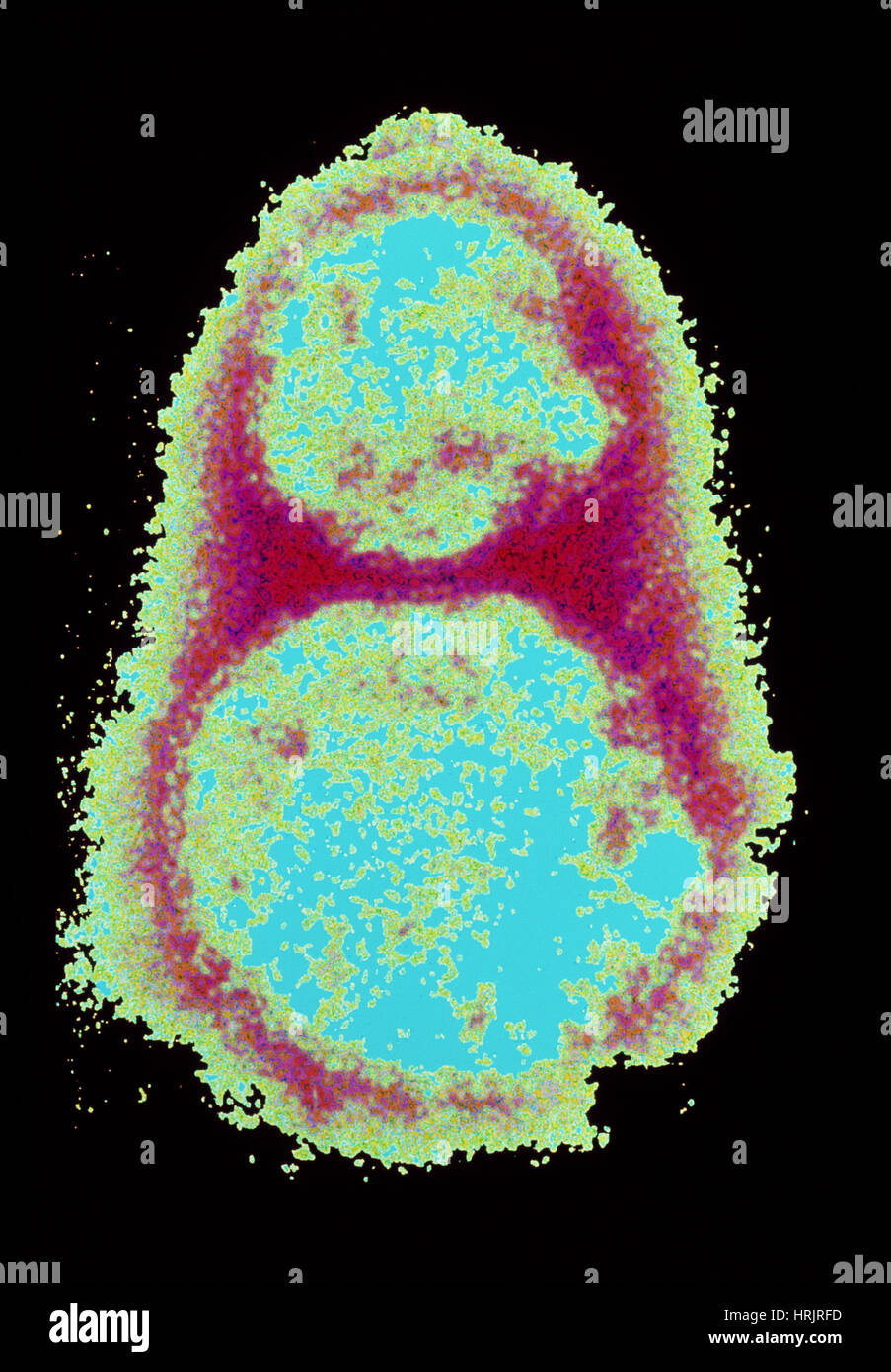 Hantavirus, TEM Stock Photohttps://www.alamy.com/image-license-details/?v=1https://www.alamy.com/stock-photo-hantavirus-tem-135023265.html
Hantavirus, TEM Stock Photohttps://www.alamy.com/image-license-details/?v=1https://www.alamy.com/stock-photo-hantavirus-tem-135023265.htmlRMHRJRFD–Hantavirus, TEM
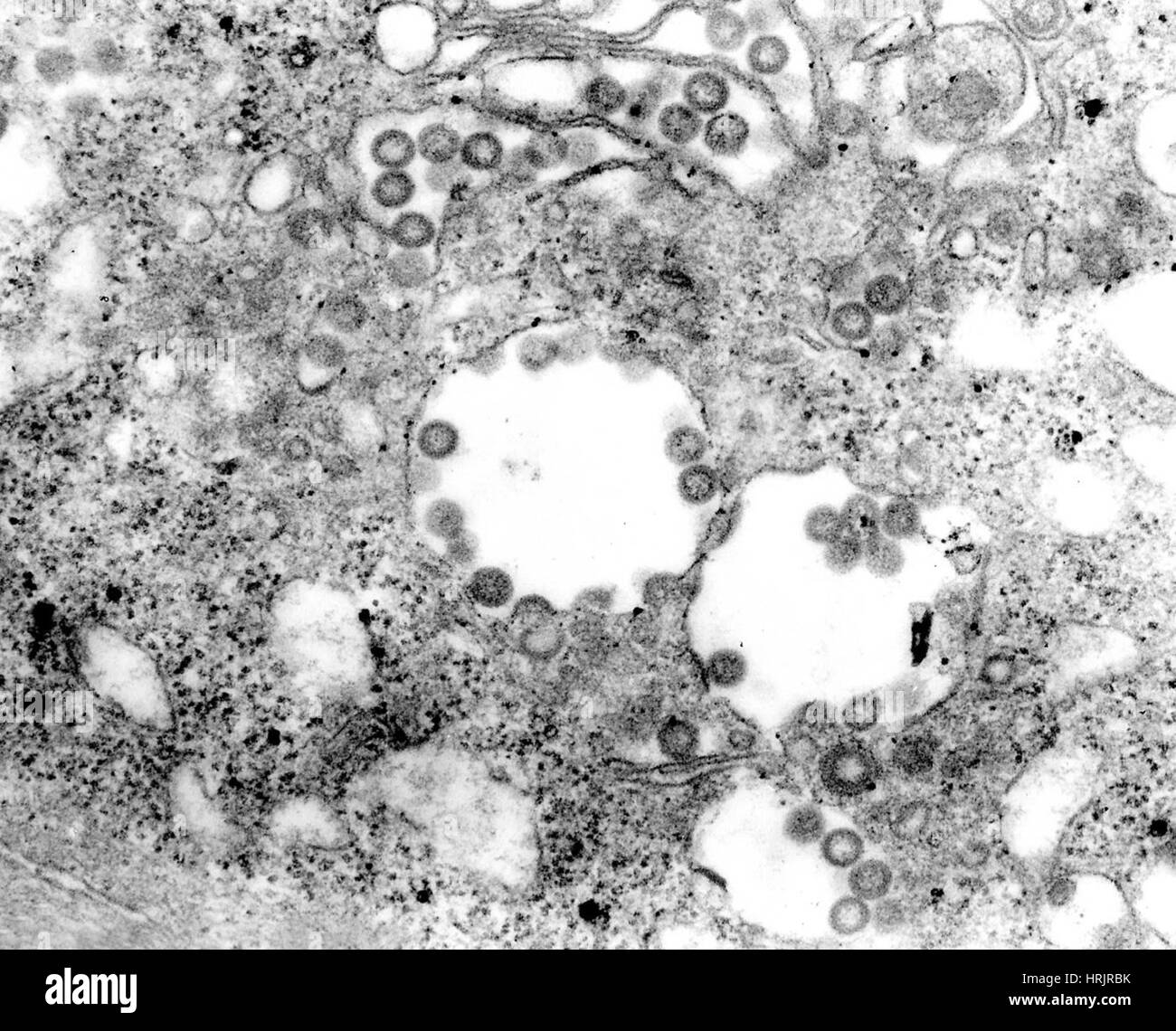 Rift Valley Fever Virus, TEM Stock Photohttps://www.alamy.com/image-license-details/?v=1https://www.alamy.com/stock-photo-rift-valley-fever-virus-tem-135023159.html
Rift Valley Fever Virus, TEM Stock Photohttps://www.alamy.com/image-license-details/?v=1https://www.alamy.com/stock-photo-rift-valley-fever-virus-tem-135023159.htmlRMHRJRBK–Rift Valley Fever Virus, TEM

